In the spring of 2023, we returned for the 3rd time to Galicia, a region of Spain that we particularly enjoy. If you read us from time to time, you may have noticed that we’ve already spent more than 7 months there! 🙂 This year, we returned for a brief getaway to attend a workshop. We took the opportunity to add a 2-day visit to the beautiful Galician city of Santiago de Compostela, which we hadn’t seen before!
Are you joining for a little tour of the city?
Santiago de Compostela: a city of pilgrims and students!
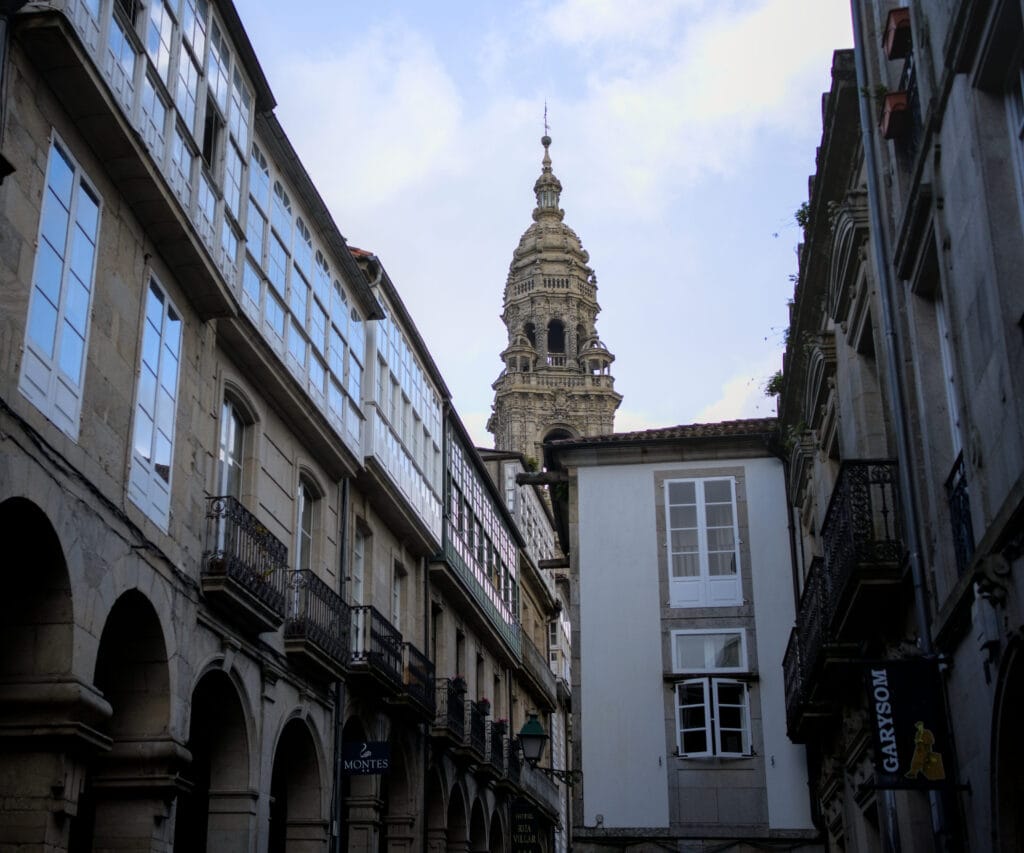
It’s funny, because Santiago de Compostela isn’t a particularly touristy city (yes, very few people decide to go there for a weekend…) and yet… it’s world-famous! In fact, what makes it so famous is the famous Camino de Compostela (St James ways) itineraries, which end at the foot of its emblematic cathedral.
Established in the early 9th century following the discovery of the relics of James of Zebedee, the Compostela pilgrimage gained momentum from the 11th century onwards, emerging as one of the principal journeys for medieval Christians. But what really “propelled the destination” was Pope Alexander VI’s formalization of Santiago de Compostela as one of the “three great pilgrimages of Christendom”, alongside Jerusalem and Rome. From then on, the infrastructure (gîtes, pilgrims’ hostels) developed and it became the pilgrimage destination that almost everyone has heard of at least once in their lives 😉
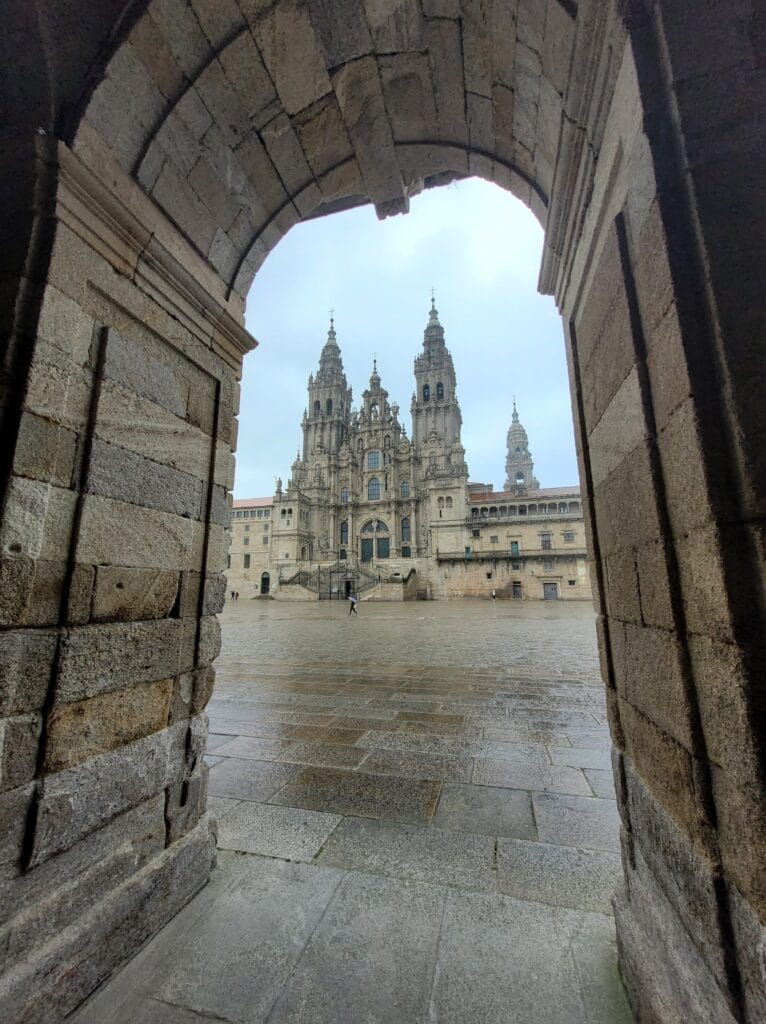
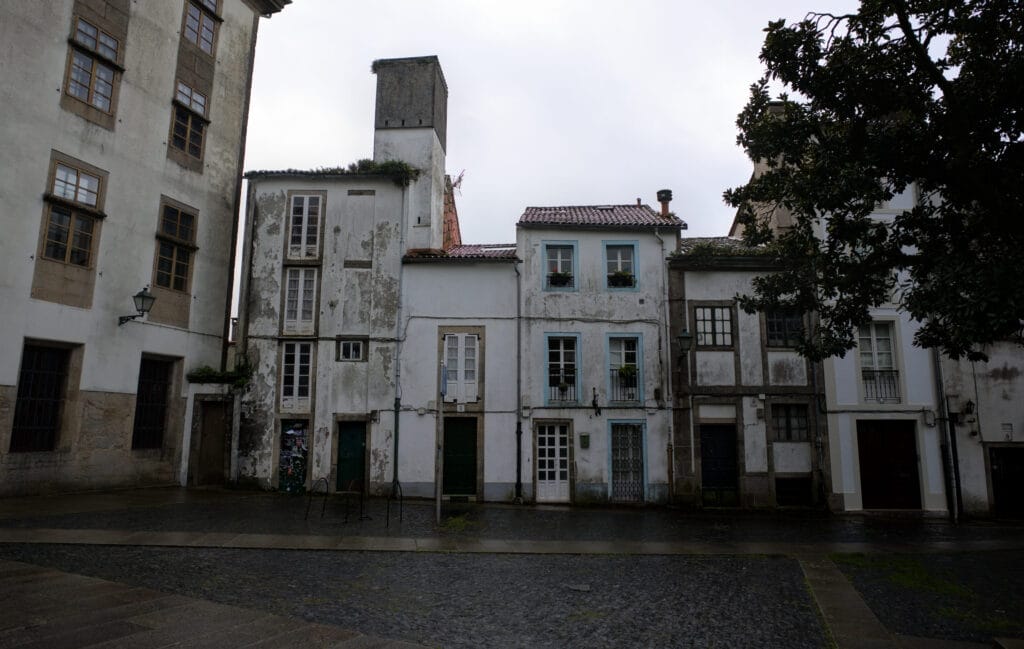
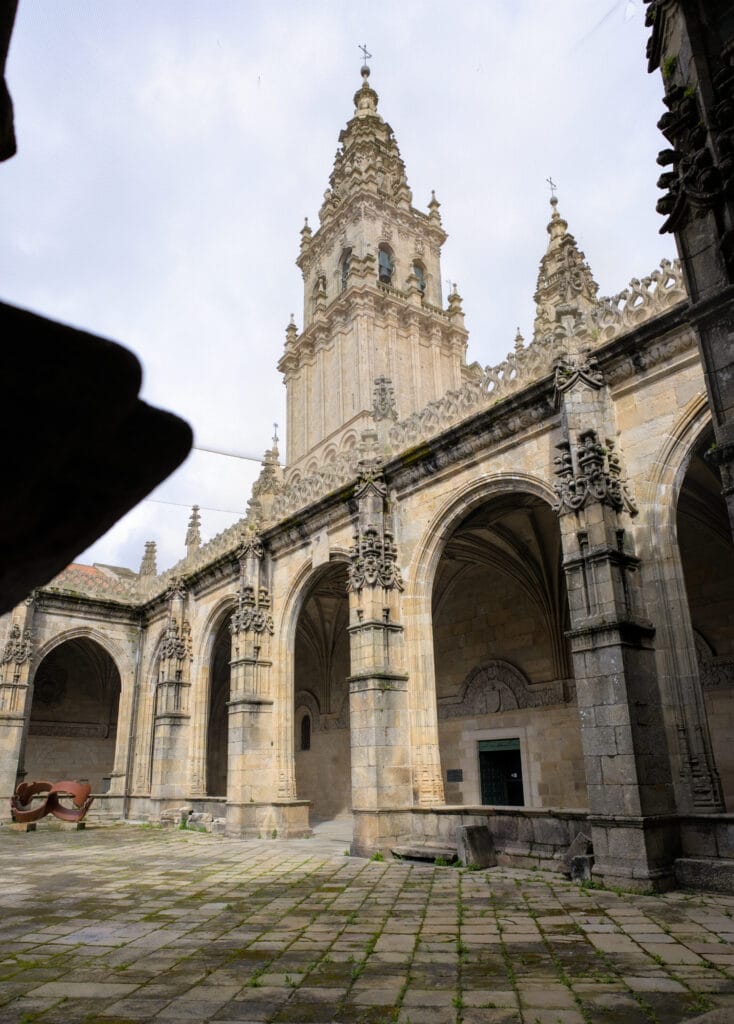
Then there’s another category of people who know Santiago well: students (especially Spanish). This side of the city is less well known, but Santiago de Compostela is a real student city! If you look at the figures, it’s actually quite incredible: around 96,000 inhabitants in the city, and among them… 30,000 students! In short, a third of the population is made up of students, and you can clearly feel it when you wander around the city! There are plenty of bars and restaurants where you can eat for cheap, and there’s a decidedly youthful atmosphere in the pedestrianized streets of the city center!
What to see and do in Santiago de Compostela
That’s not all, but why not talk a little about what there is to see in Galicia’s political capital? Here’s a quick rundown of the must-sees (and a few addresses we received from our Galician friends)
The cathedral of Santiago de Compostela
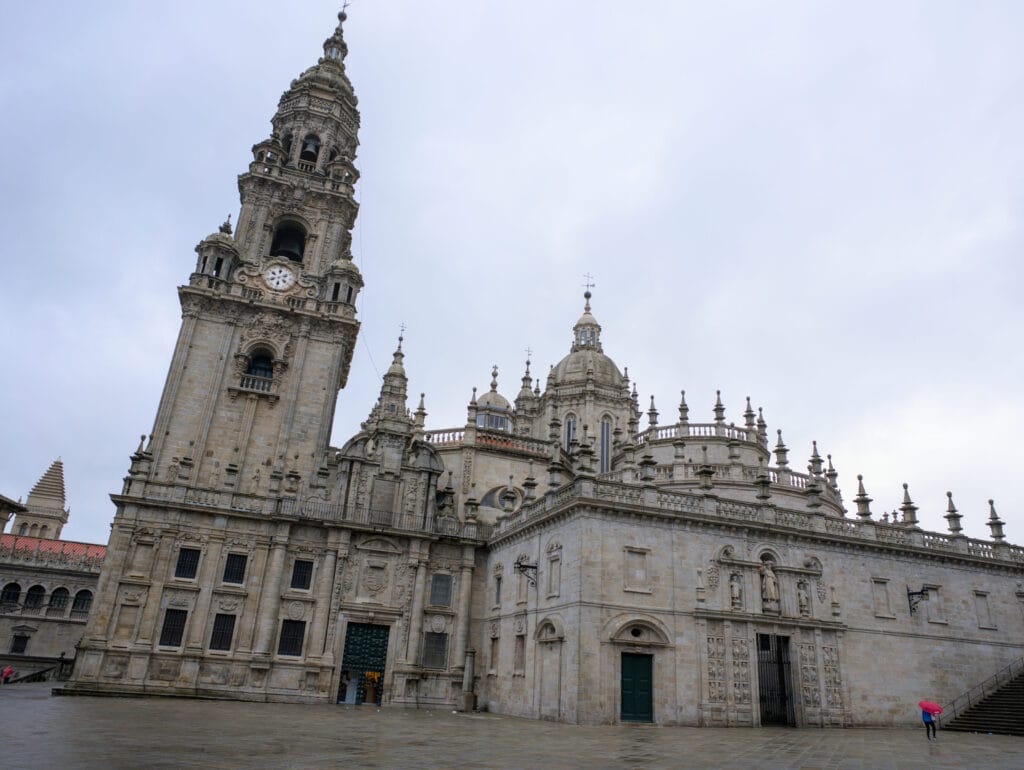
First things first: the iconic cathedral of Santiago de Compostela and the Plaza do Obradoiro in front of it. If you come to the city, it’s impossible to miss it, as almost every alleyway leads to it 😉
The Praza do Obradoiro is at the center of four of the capital’s most emblematic buildings: the Hospital of the Catholic Monarchs, the Pazo de Raxoi (Town Hall), the Colexio de San Xerome and the Cathedral of Santiago de Compostela. What’s special here is that all these buildings have radically different architectural styles!
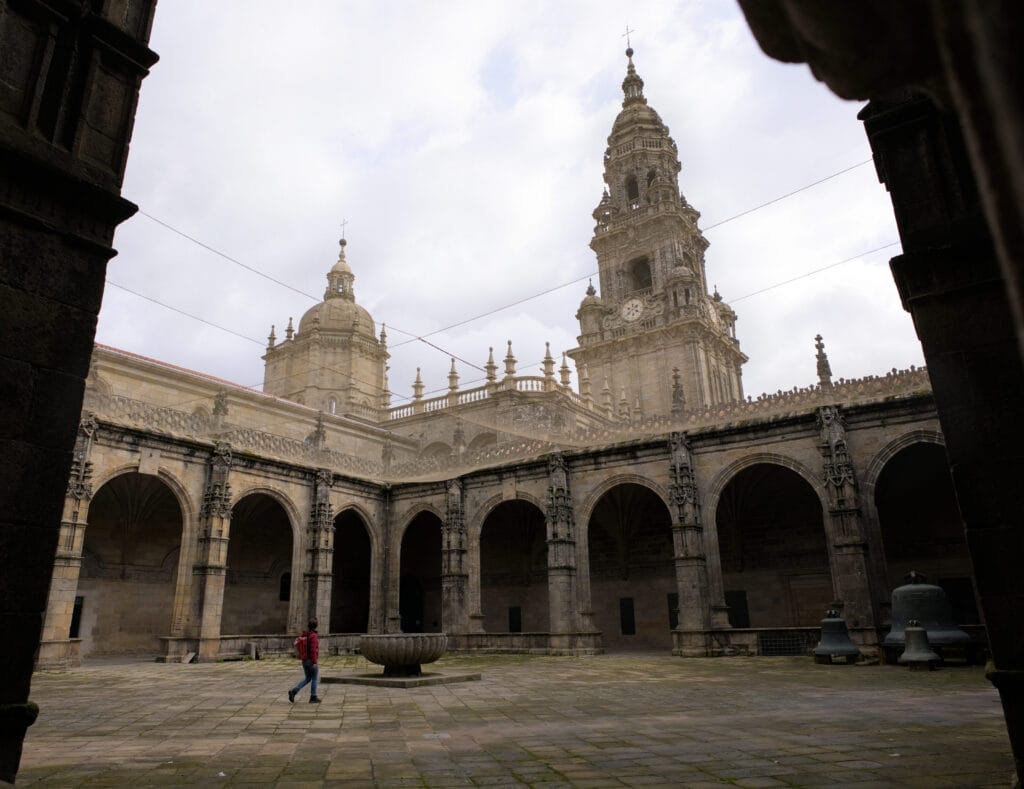
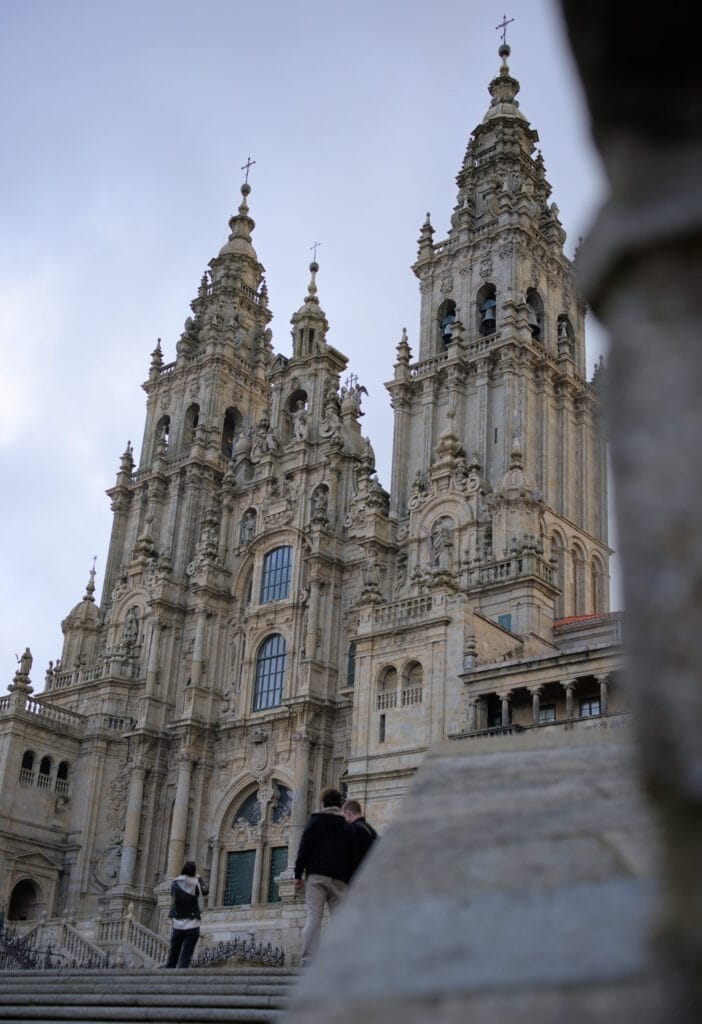
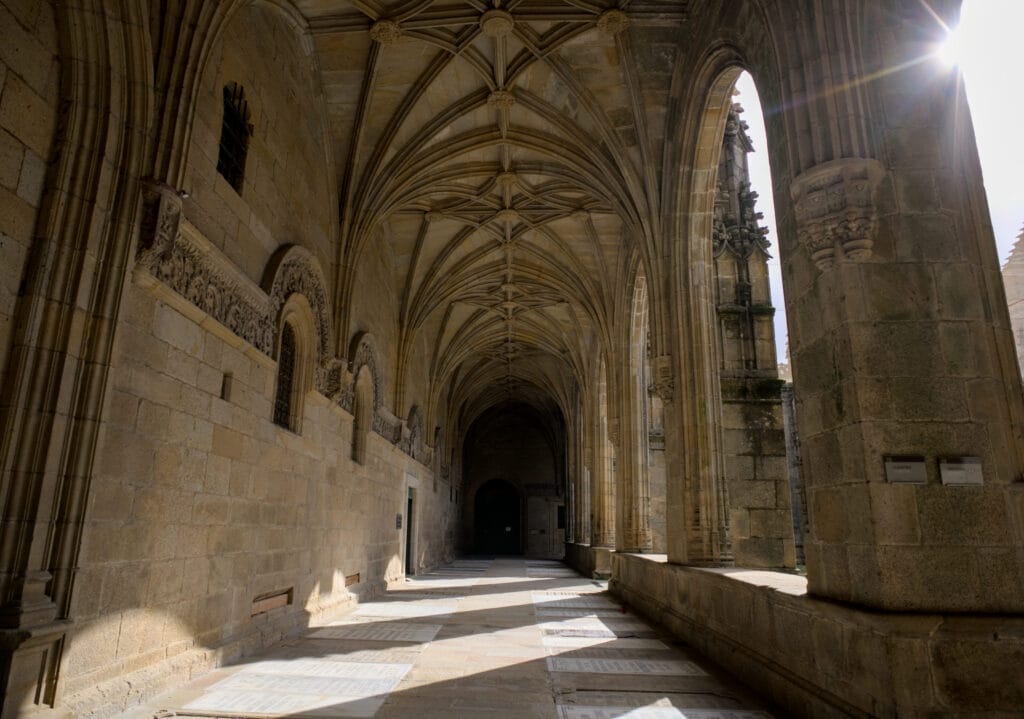
The cathedral itself is free to visit, but all the adjoining museums are not: Portico de la Gloria (Porch of Glory), General Museum (permanent exhibition) and the option of climbing to the roofs (more on this below). To buy tickets, the oddical website offer tickets (with the option of adding an audio-guide). Count €12 for the Portico and the General Museum.
After that, if you have the time, we recommend a guided tour! Getyourduide offers tours in English and Spanish. The price is €15 for the guided tour of the museum, or €25 if it also includes the Porch of Glory.
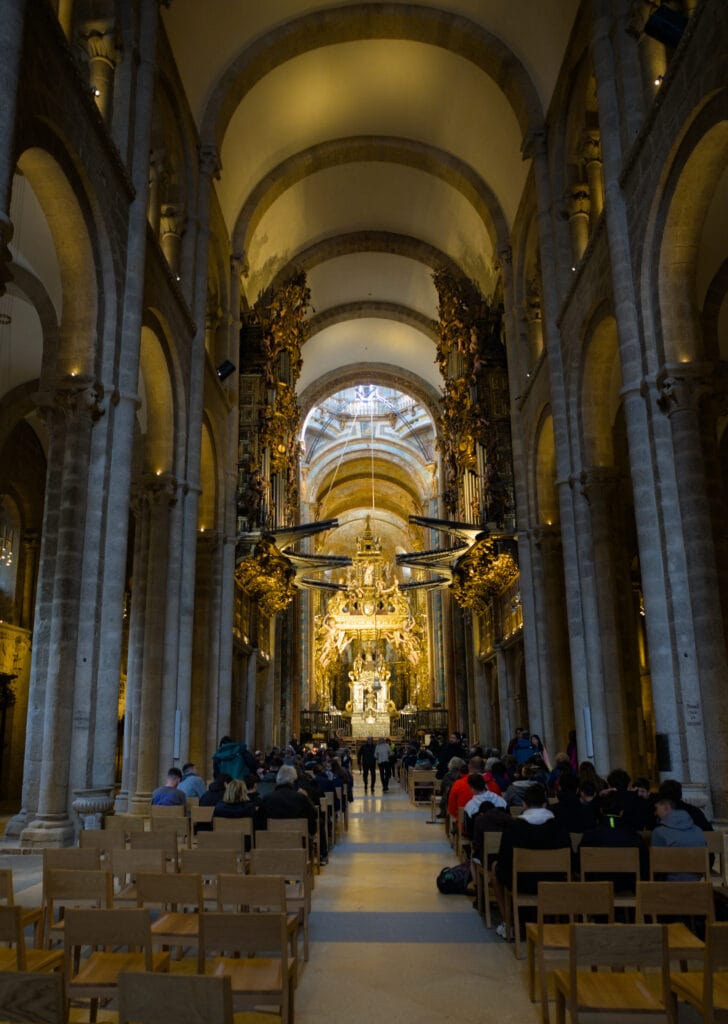
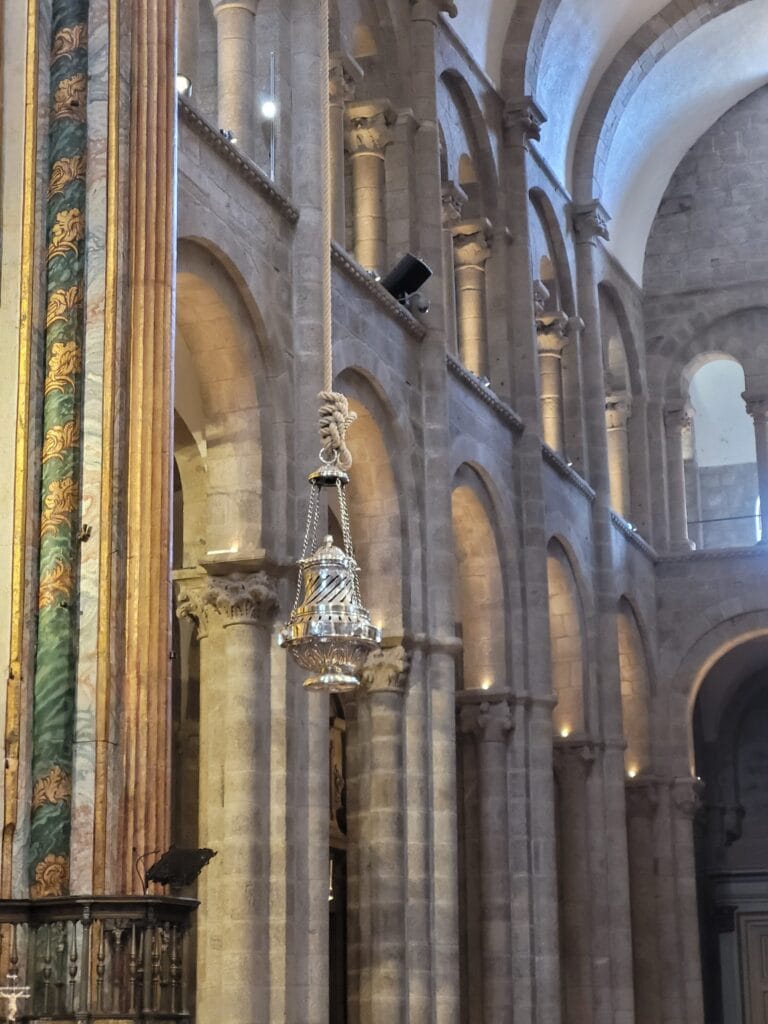
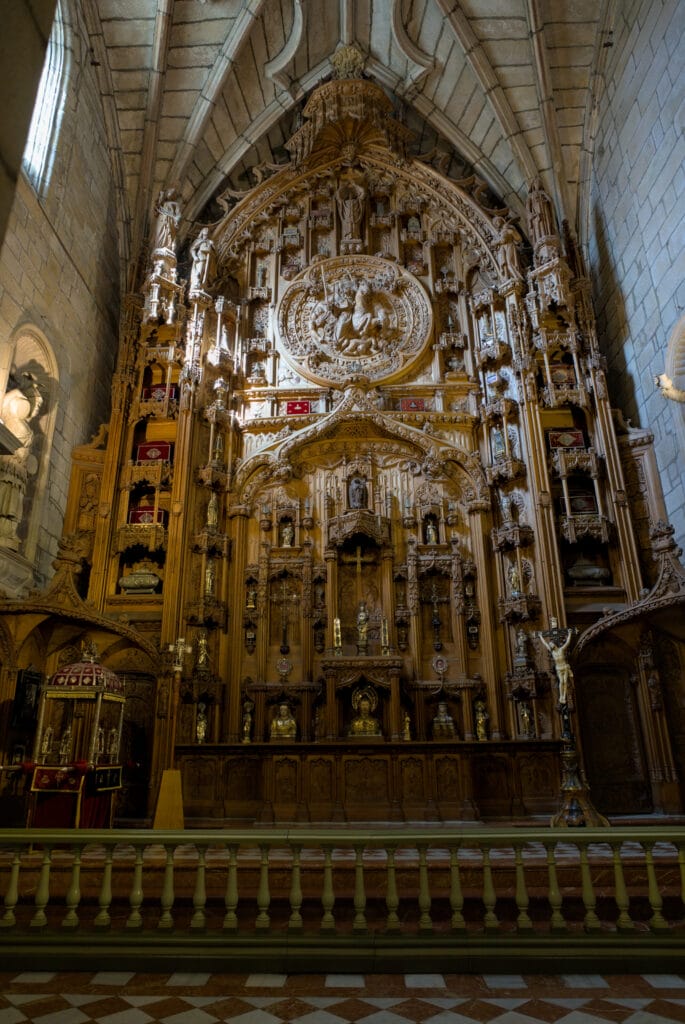
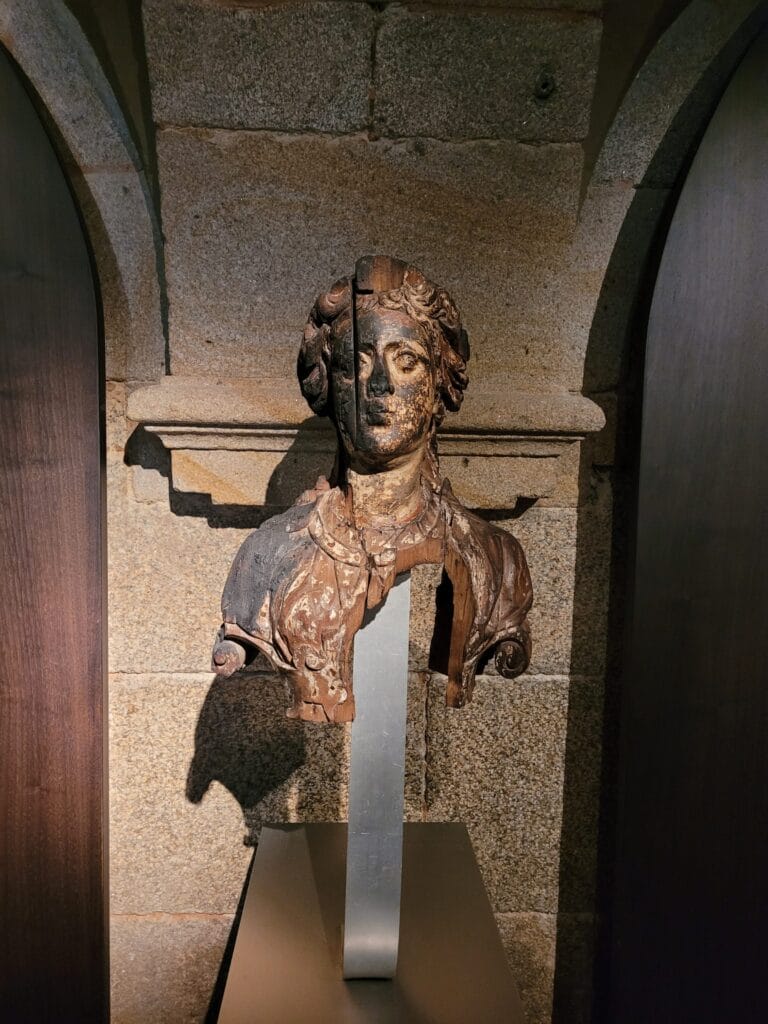
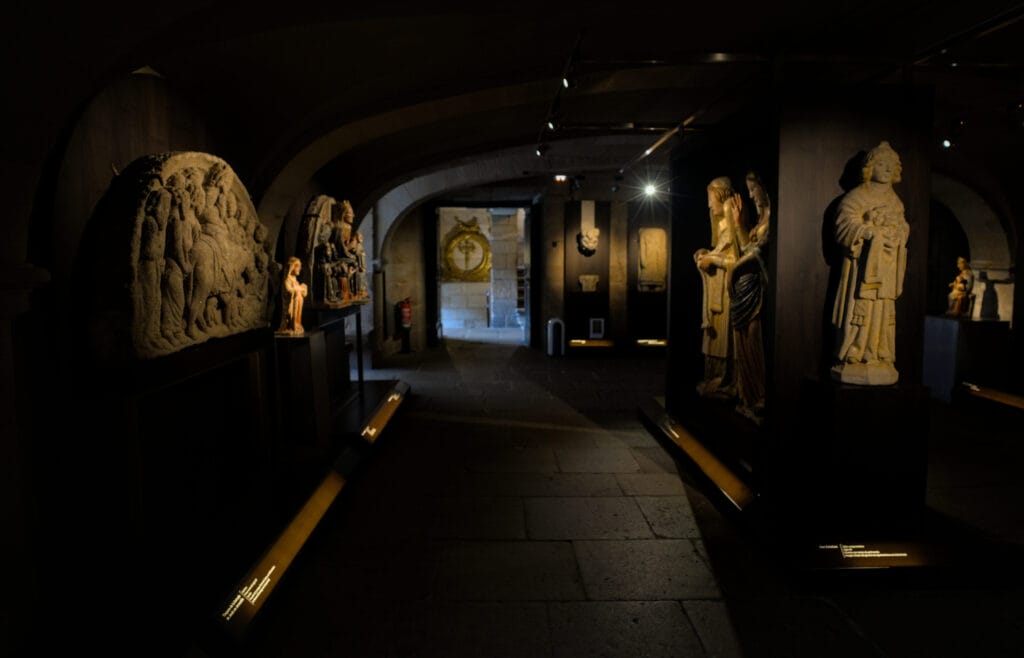
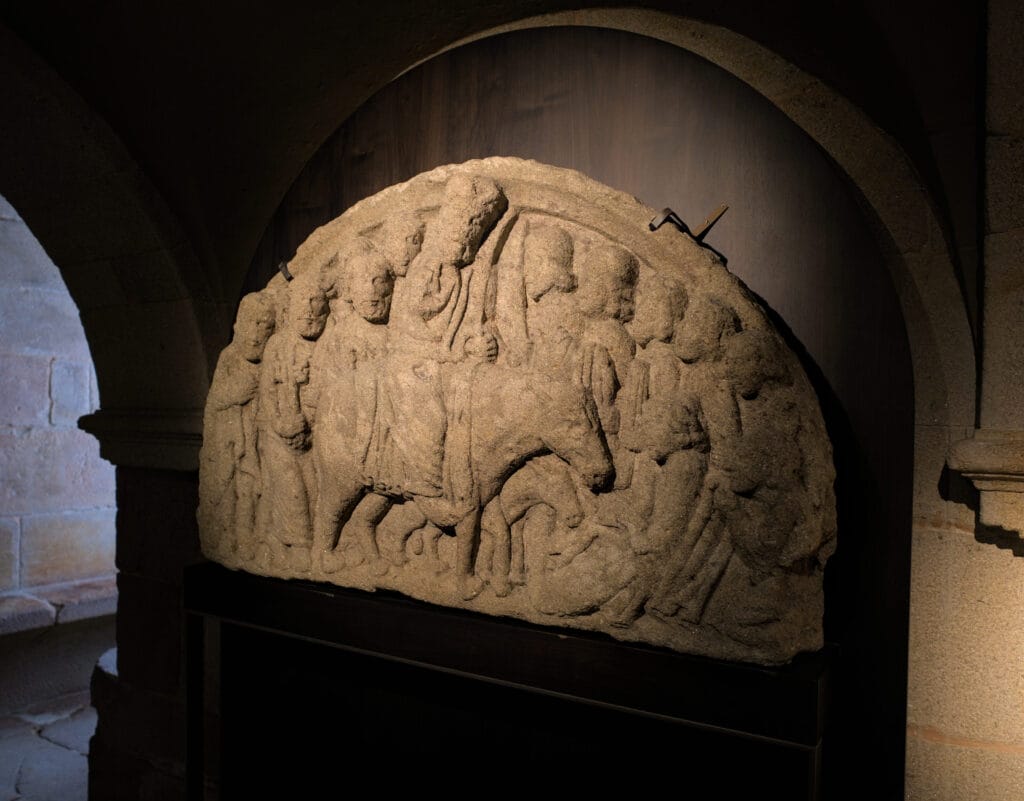
A walk on the roofs of the cathedral of Santiago de Compostela
Now that’s probably THE visit we’d advise you not to miss!!! There is the option of taking a guided tour that passes over the roofs of the cathedral and also allows access to one of the towers. The view from up there is simply breathtaking, and it’s not every day you get to walk on the roof of a cathedral 😉
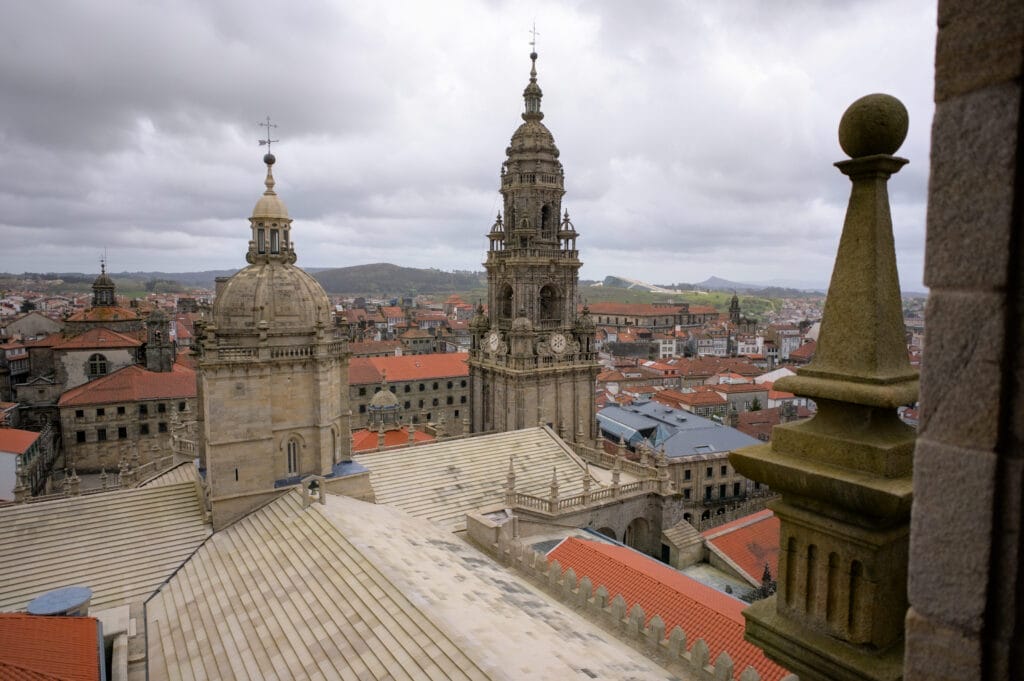
To buy tickets, you can either go directly to the venue or book in advance on the official website. I have to admit I’m torn between the 2 options… we didn’t know we could book online (their site is unimaginably poorly designed, in our humble opinion). In short, the day we went to the ticket office everything was fully booked and we didn’t get a seat until the next day (fortunately we were staying several days). If you don’t book in advance, go to the ticket office on the 1st day of your stay!
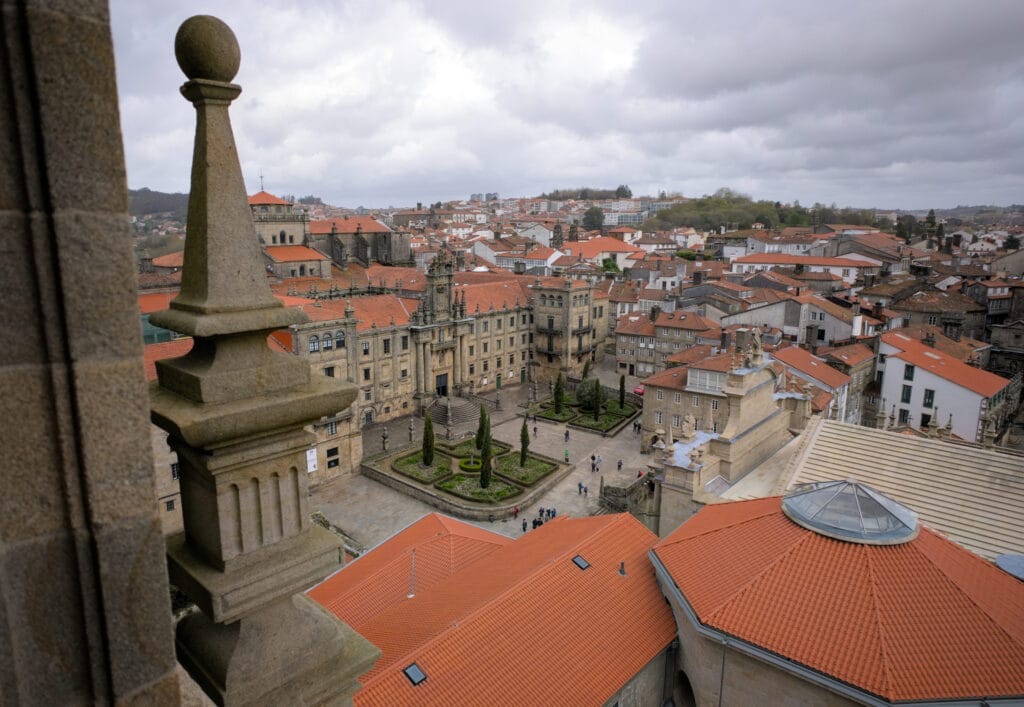
The official website (12€ per ticket)
Note that you can buy a combined ticket for the Porch of Glory and the rooftops for €20 (instead of €24). Their site is so badly designed that they’ve even made a manuel to explain how to buy the combined ticket (in Spanish only). But basically, you need to select 2 special “combined” items at €10 in your basket (put the first one in then click on “continue shopping” and select the 2nd)
As for us, we were lucky… even if we had the tour in Spanish (no English available) and probably didn’t grasp all the subtleties of the explanations 😉
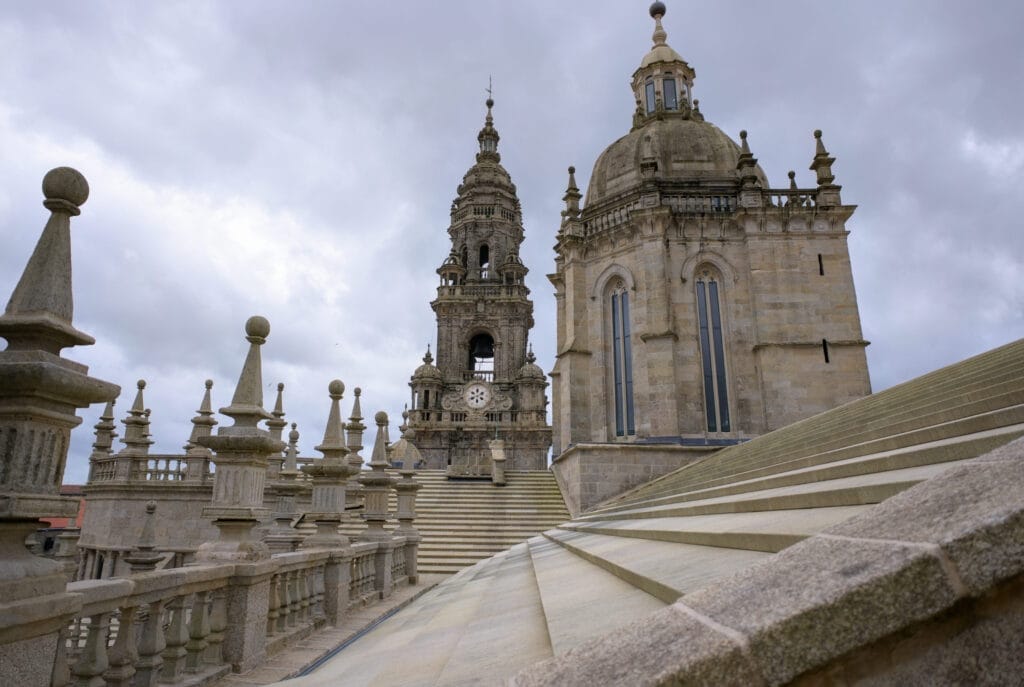
After all, the advantage of not booking online is that you can have a bit of visibility when it comes to the weather… it does rain relatively often in Galicia, so booking several weeks in advance can be risky when it comes to the weather (especially if you want to take photos) 😉
Stroll through the historic center
This is not a specific recommendation, and quite frankly, you’ll do it anyway! But what I do mean is that, when planning your stay, we advise you to allow 2-3 hours simply to walk through the narrow streets of the pedestrian center. It’s really very pleasant, and you’ll discover lots of lovely little restaurants and cafés around every corner.
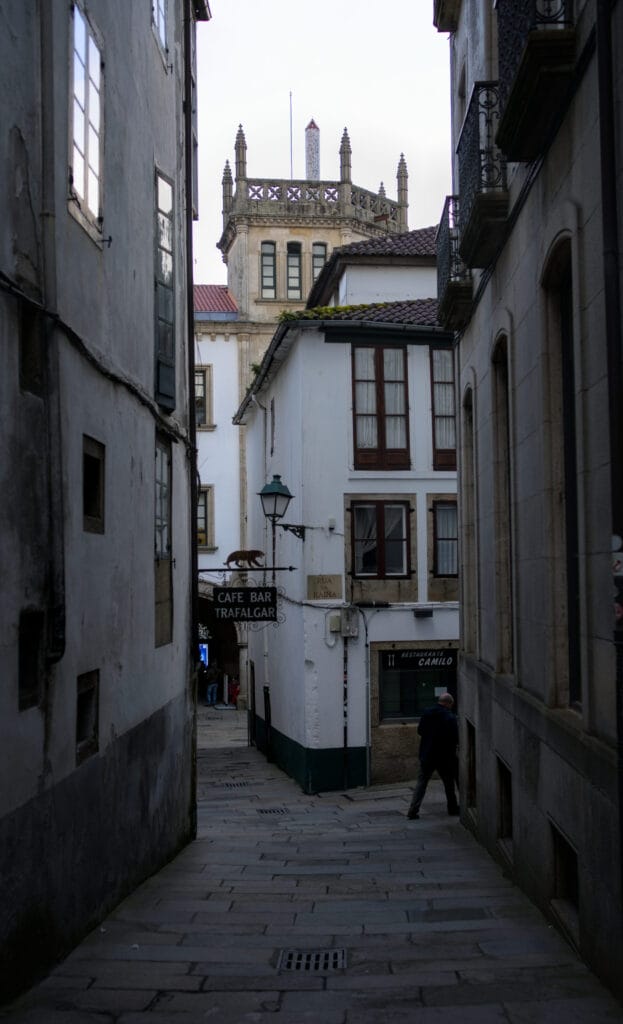
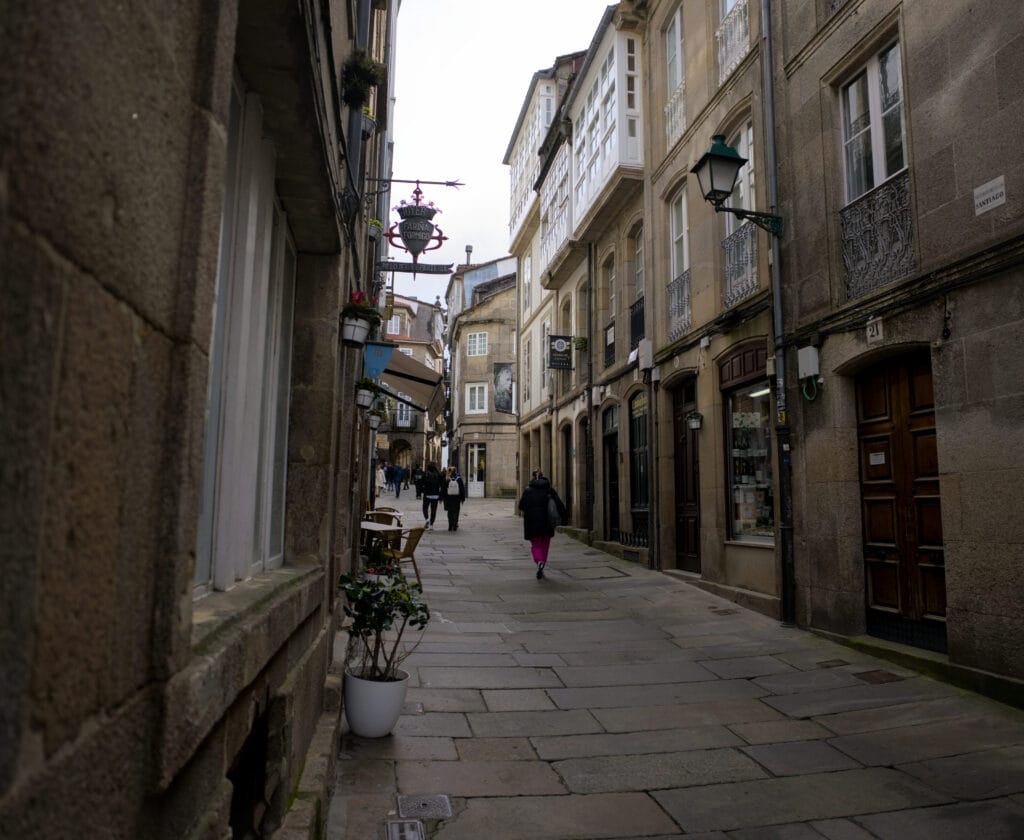
Alameda Park
Change of scenery: after the more cultural part, we’re offering you a little green break. 🙂 Located 2 steps from the historic center, it’s a great place to take a stroll or grab a sandwich during your lunch break. In the park, it’s well worth walking along the main avenue (Paseo da Ferradura), but also taking a look at the cathedral’s viewpoint! This viewpoint offers a magnificent vantage point over the western part of the old town!
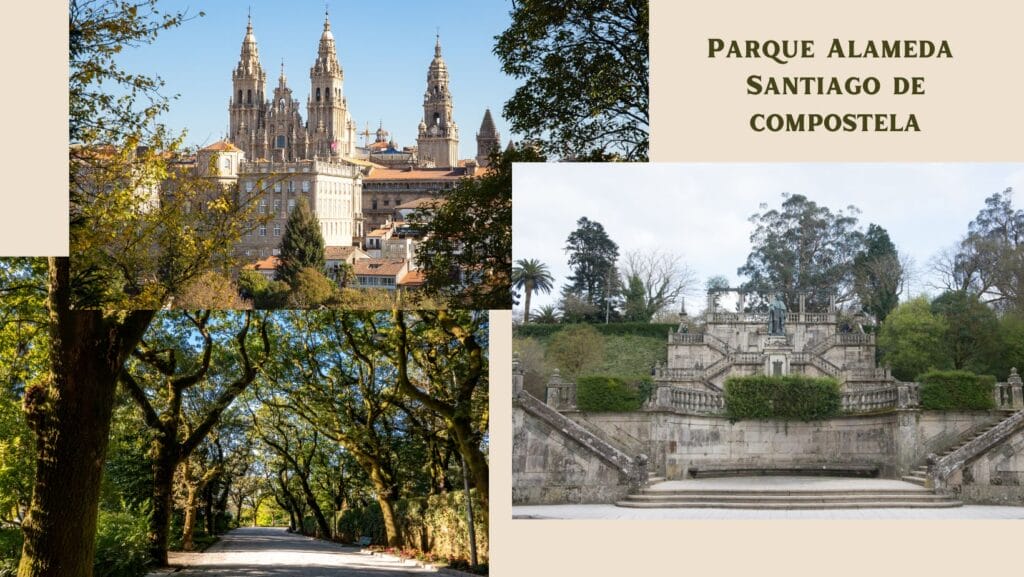
The Pilgrims’ Museum
We’ll be totally honest, we hadn’t particularly planned to visit this museum… but caught in a sudden downpour worthy of an end-of-the-world atmosphere, we looked for more “indoor” activities and since we were next door, we figured “why not”.
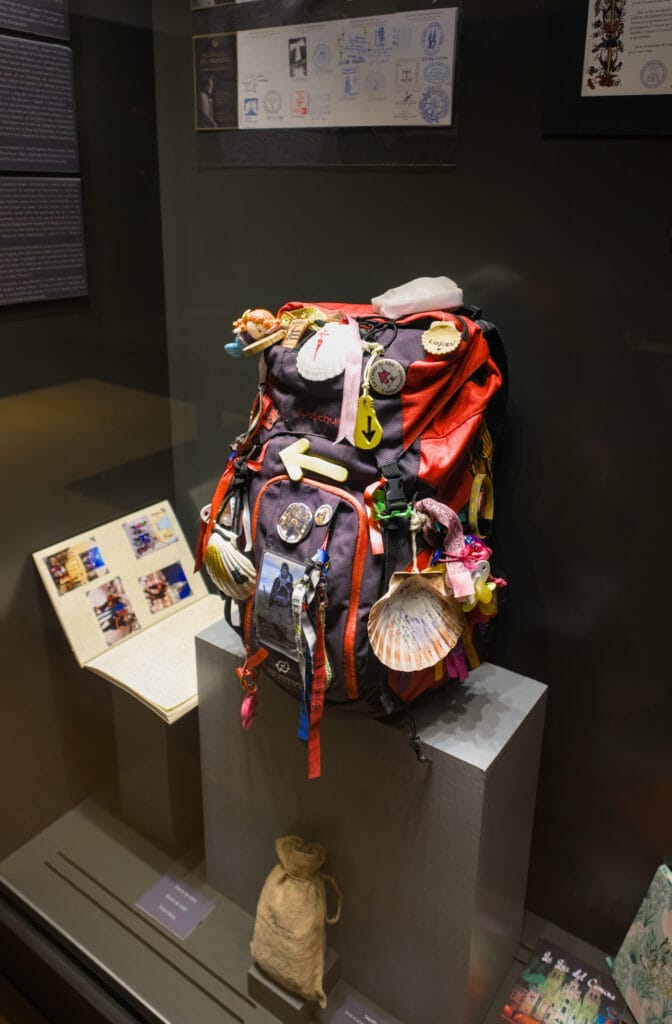
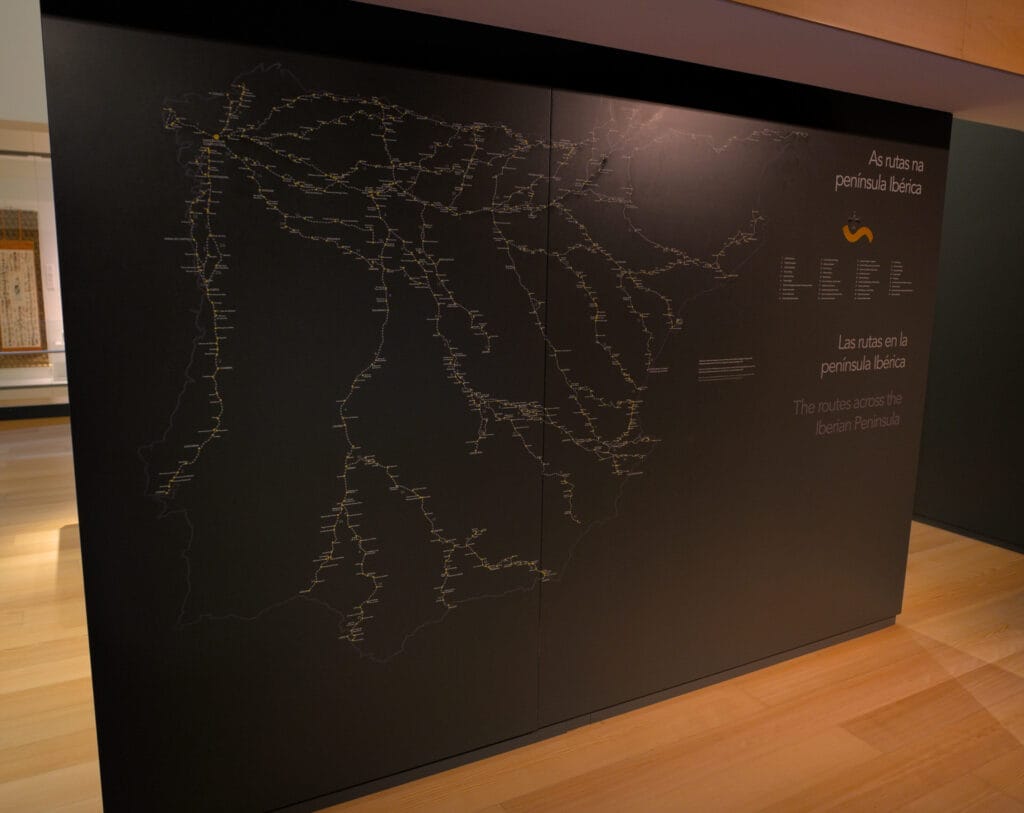
The museum is housed in what used to be the former Bank of Spain building, and the exhibition traces the history of the famous Pilgrim’s Way to Santiago de Compostela over the building’s 3 floors.
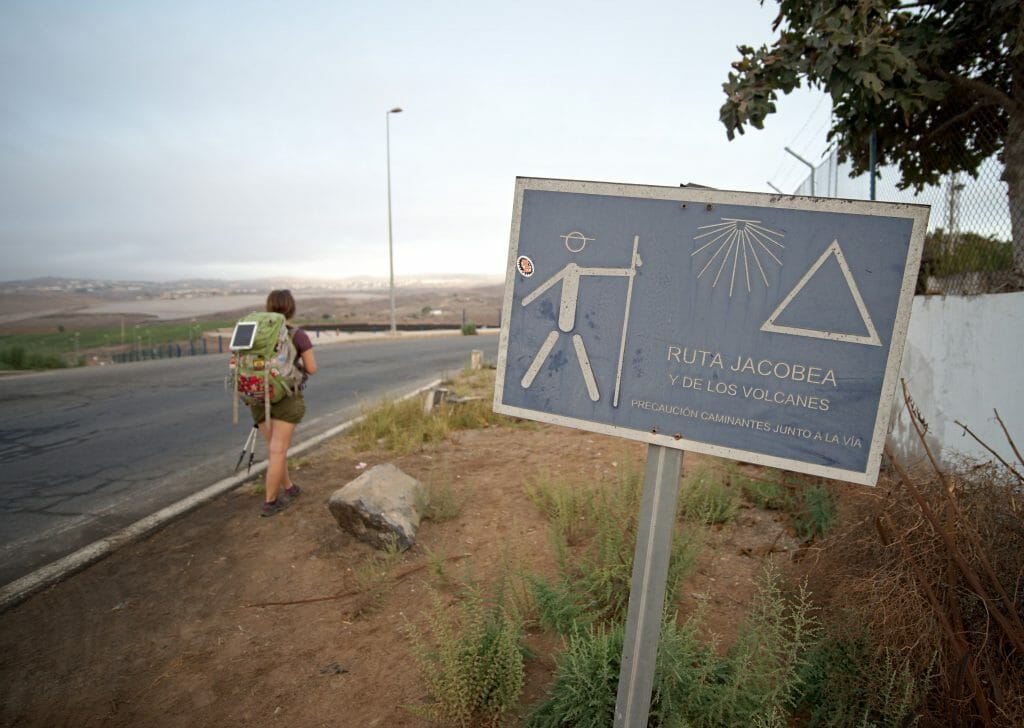
Quite honestly, we’re not what you’d call passionate about the Pilgrim’s Way to Santiago de Compostela (in fact, we’ve only followed one in Gran Canaria) 😉 but even so, we really enjoyed this visit! It really is a great “indoor” activity if you’re in Santiago de Compostela, or if unlike us you’ve walked all or part of one of the famous routes.
The museum is open from Tuesday to Sunday. Admission costs €2.4. Reduced rate for pilgrims (the lady wanted to give us the reduced price because we clearly looked like hikers… we had to disappoint her by telling her we hadn’t followed the pilgrimage route).
The Galician People’s Museum
Located in a former Dominican convent, the Museum of the Galician People is an excellent way to learn more about the region and its people. The museum’s exhibits focus on different aspects of Galician daily life. There are rooms dedicated to the sea, traditional trades, the countryside, clothing and architecture.
Very well done, although the explanations are sometimes a little succinct… But then, the building itself is splendid and well worth the detour on its own. In addition to the famous spiral staircase, the visit also includes a superb Romanesque chapel.
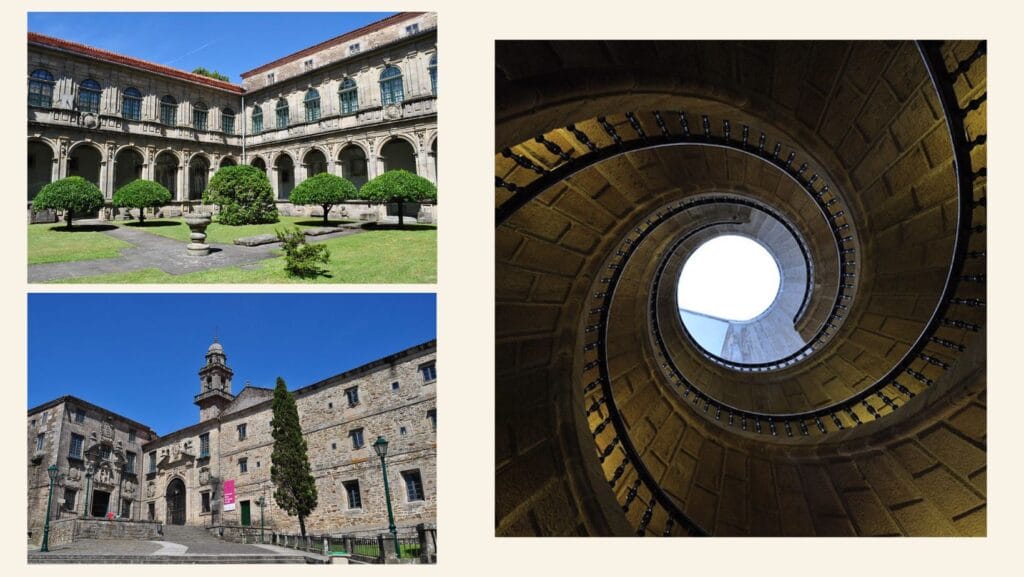
© photos: Bernard Blanc
The San Martin Pinario monastery
Located right next to the famous cathedral, the San Martin Pinario monastery is the city’s second largest religious building. With its predominantly Baroque architecture, this is one impressive building! You can’t visit it in its entirety (there are some 20,000m2 in all). In fact, part of the building houses a hotel… But you can get in every day between 10 a.m. and 2 p.m. and between 3.30 p.m. and 7 p.m. to see the museum and the church.
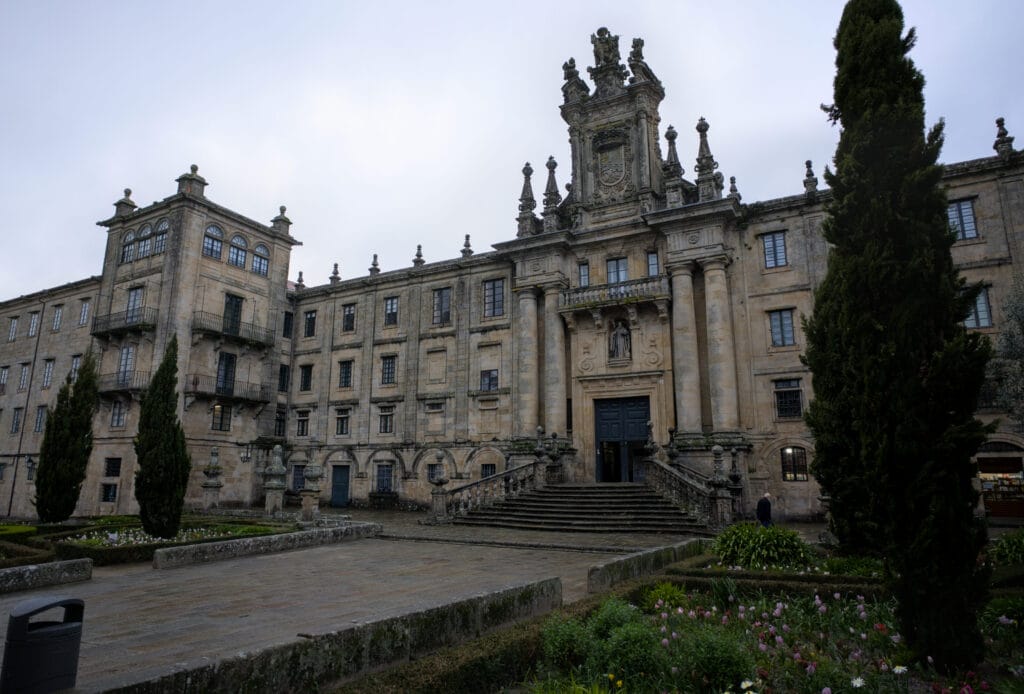
Abastos market
Second only to the cathedral in terms of number of visitors, the Abastos market is a must! You’ll find plenty of stalls selling fruit, vegetables and freshly caught seafood. We recommend you visit in the morning (between 9:30 and 12:30) to see the most activity. Please note that the market is open Monday to Saturday (closed on Sundays).
If you like octopus, this is most likely where you’ll eat the best. One of the aisles (N°5) is entirely dedicated to catering, so it’s a great place to stroll when you’re feeling peckish 😉

Address: Rúa das Ameas (right next to the historic center). We’ve put the location on the map at the end of this article.
Get out of Santiago and explore the Galician coast
To round off this selection of things to do, we simply couldn’t pass up our suggestion that you head out to the outskirts of the capital to explore the treasures of the Galician coast.
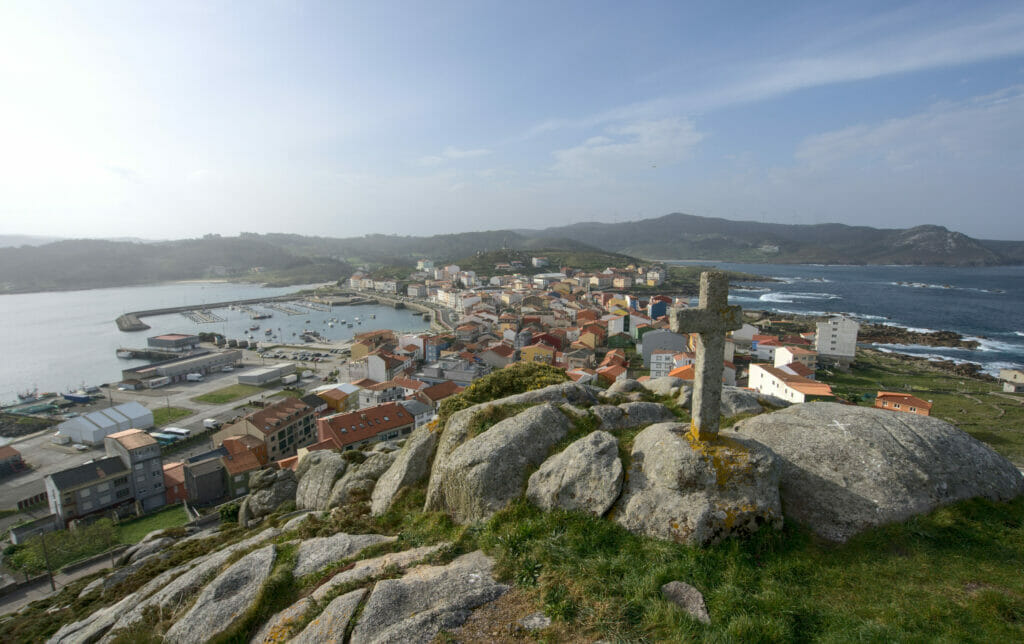
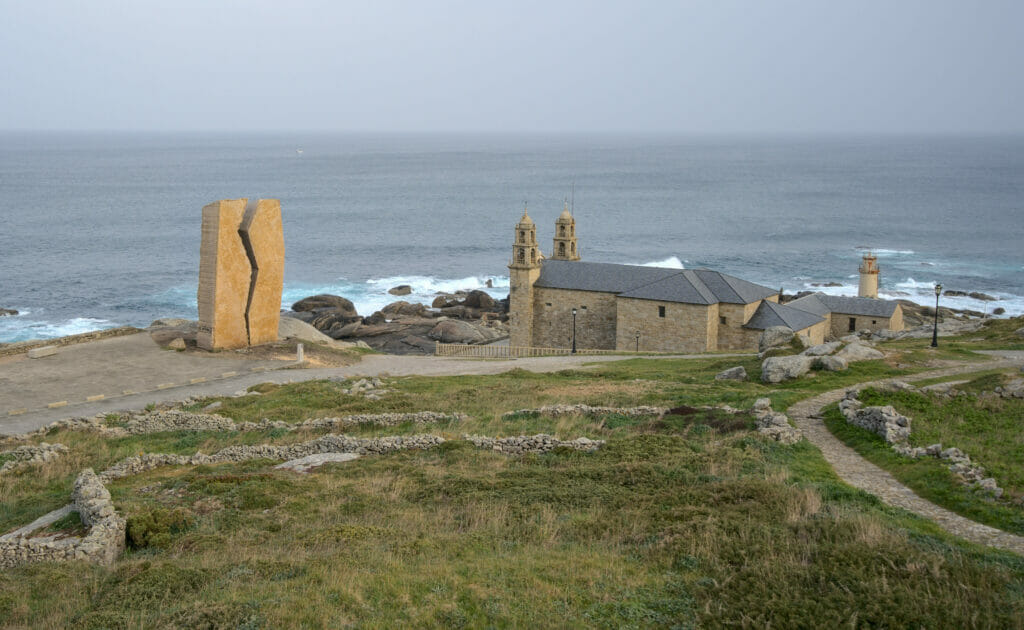
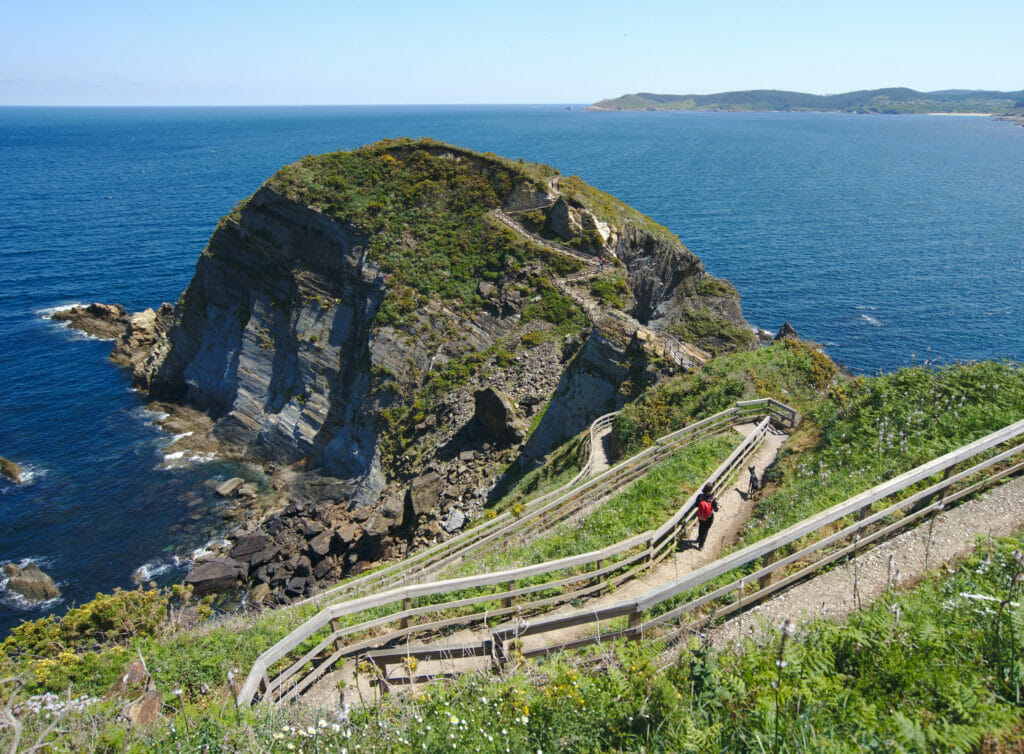
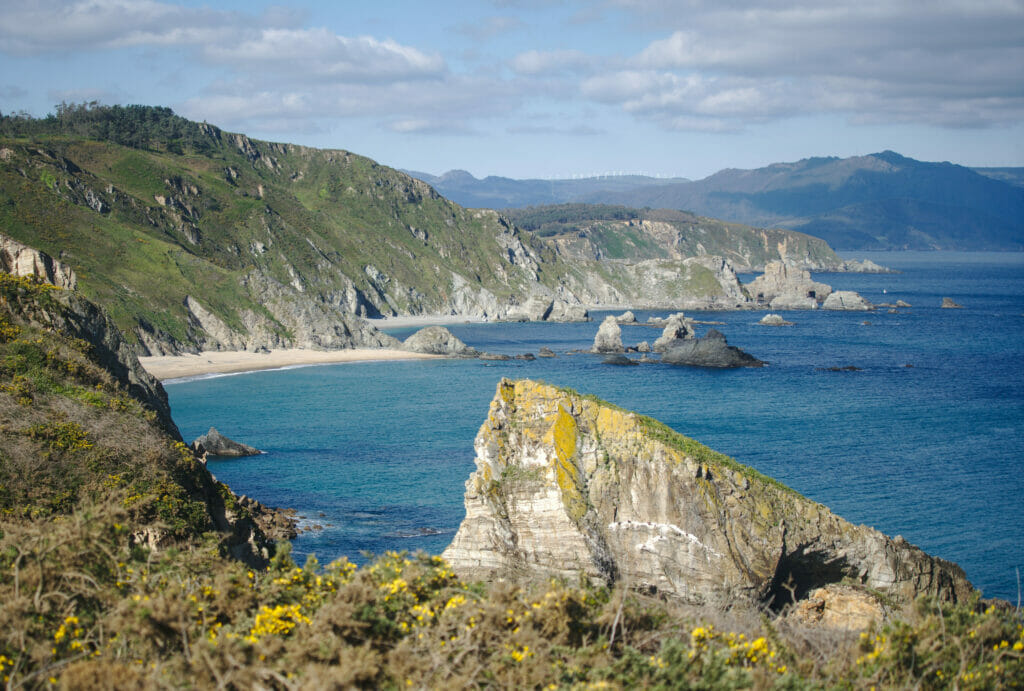
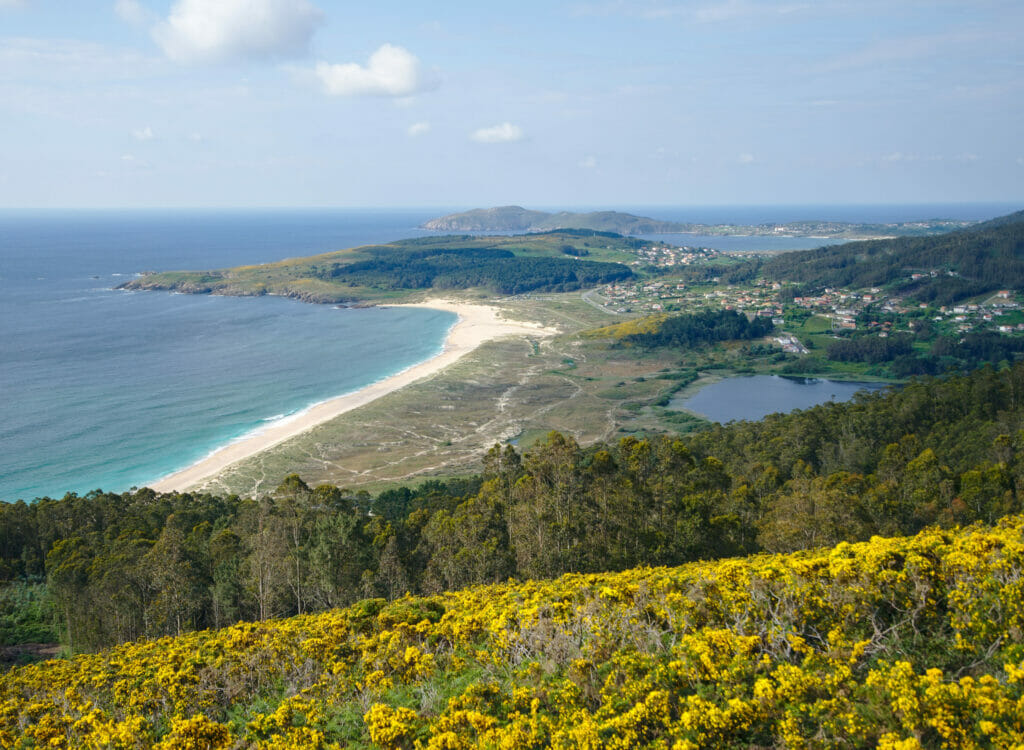
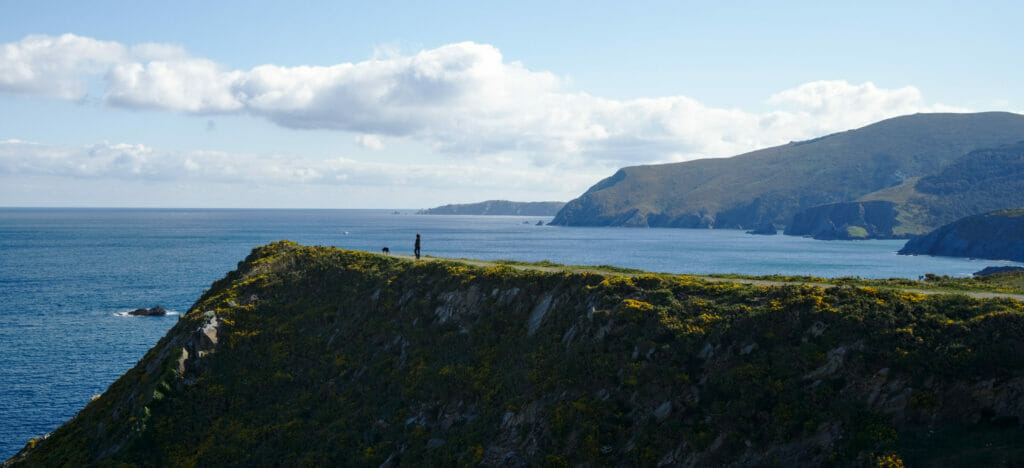
We’ve travelled there quite a bit, and we’d definitely recommend visiting places like Muxia, the Rias Baixas, the Costa da Morte or the Fisterra lighthouse!
We’ll tell you more about it below, but it’s probably best to rent a car or go for an organized tour.
If you’re still looking for a little inspiration, we’ll leave you with our various articles on the places listed above:
Visit Santiago de Compostela: all the practical information
Do a free tour
If you read us from time to time, you’ll have noticed that we particularly like to start our city visits with a free tour. So Santiago de Compostela was no exception, and we signed up for a tour.
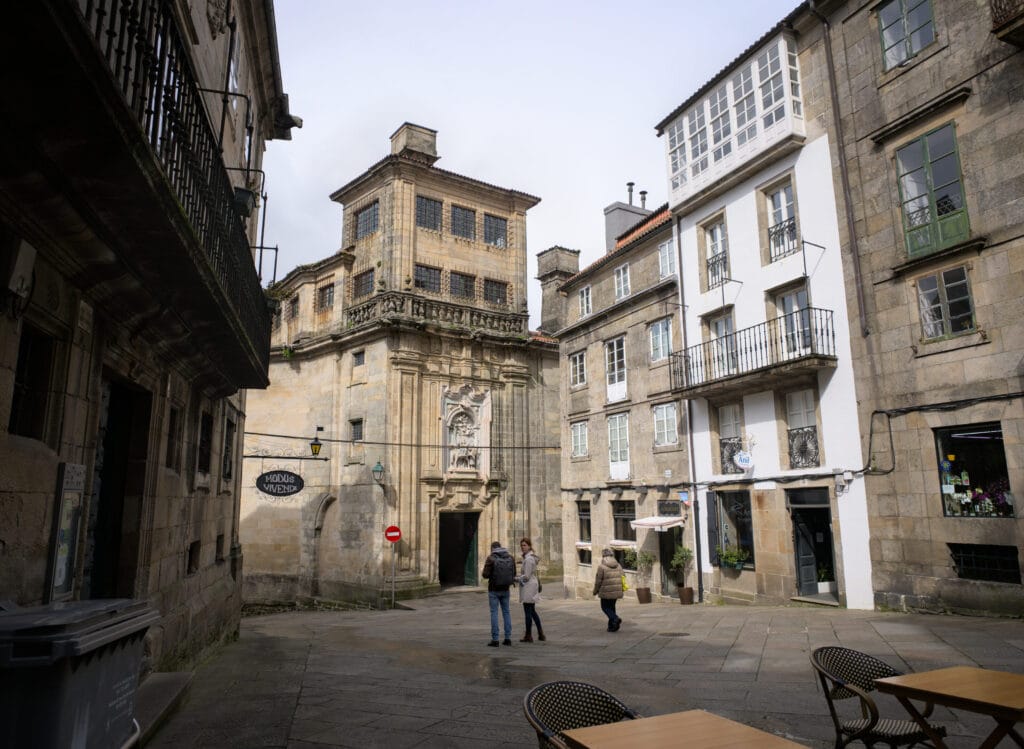
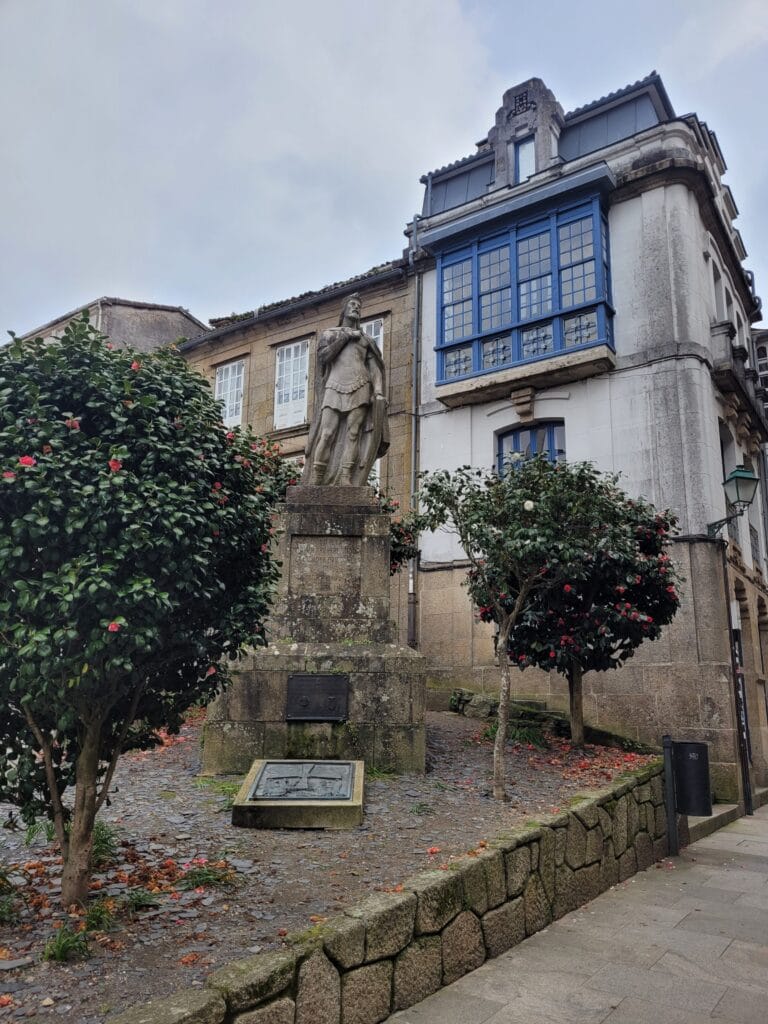
Then there’s a big BUT… As we came out of season, the tours were only available in Spanish. Our Spanish is OK, but nowhere near good enough to really understand all the anecdotes and, above all, the historical and religious details… In short, if you speak Spanish it’s as usual a very good deal, but not so much if you don’t speak the language too well 😉 After that, it seems to me that in high season, there are English versions on offer too!
Getting to Santiago de Compostela
It’s very easy to get to Santiago de Compostela. We arrived by train (from Pontevedra) and left by plane. Pilgrims usually arrive on foot 😉
From the airport, the cheapest option is to take the line 6A bus, which links the airport directly to the city center. The journey takes around 20 minutes and costs just €1 per person – unbeatable! Cabs take about 15 minutes and cost between €20 and €25.
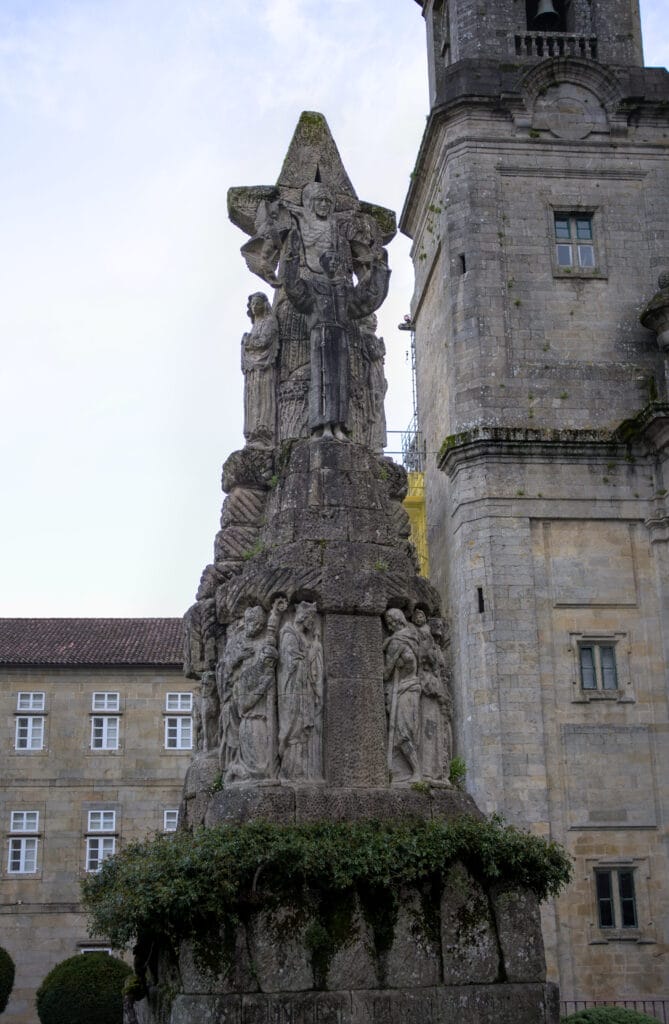
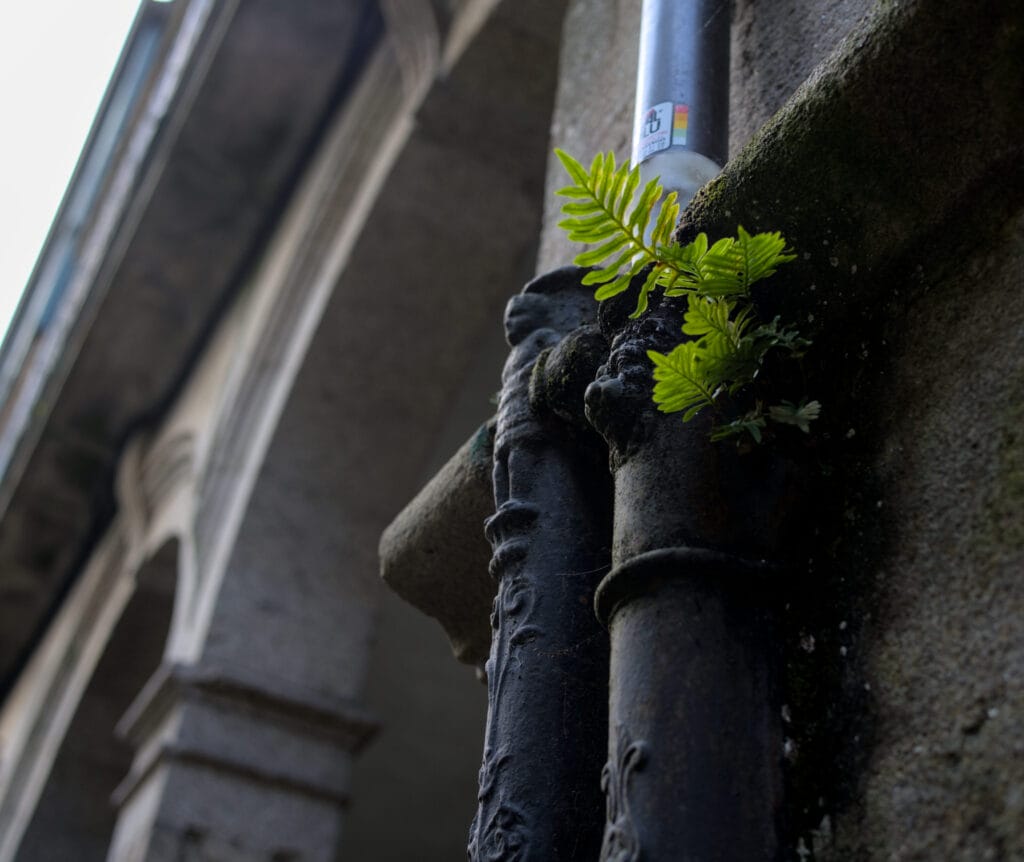
If, like us, you arrive by train (or bus – the bus station is just behind the station), you can reach the center on foot in around 15 minutes.
Where to stay in Santiago de Compostela?
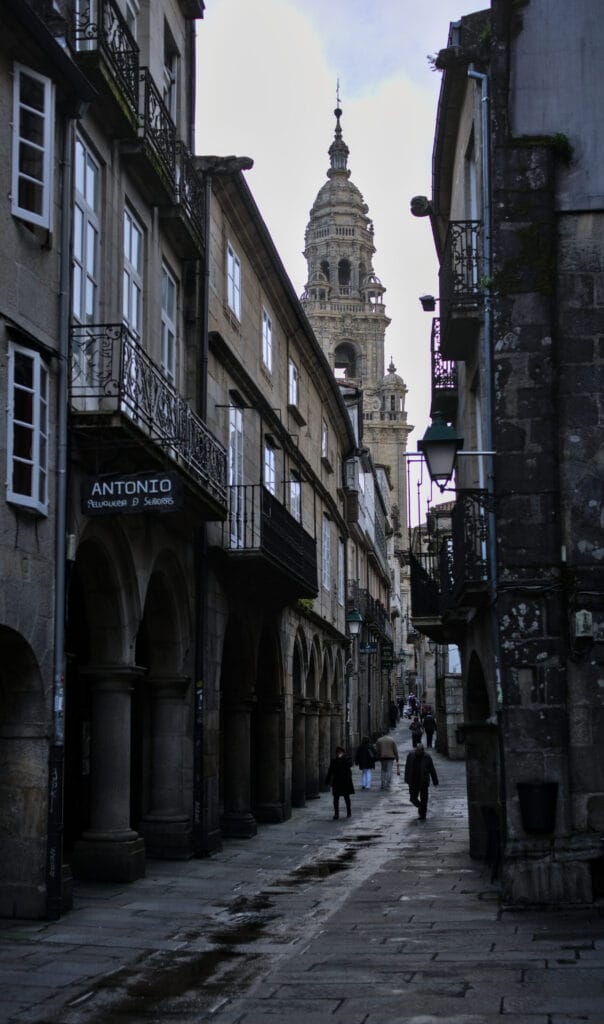
A city of pilgrims means plenty of accommodation options to suit all budgets! In Santiago, there really is a wide choice of accommodation (especially in relation to the size of the city). For our part, we only tested one hotel, ‘Universal.
To be totally frank, we were only staying for one night, so in our search we focused on central location and a moderate price. We came here in March, and the room cost us 45€. After that, it’s important to remember that Santiago is a city with very strong seasonal variations… When I was writing this article, I looked at the prices for July, and our hotel was listed at 150€ a night at weekends (105€ during the week). I’ll be honest, at 45€ it’s a very good deal (we were super happy with our room), at 150€ I don’t think we’d have taken it!
My tip: enter your dates and compare the different options on the map below or by going to Booking. For location, the city center is relatively small, so as long as you aim for a 1-2km radius around the cathedral, you should be able to see everything on foot!
Getting around town (and beyond)
Santiago de Compostela’s town center is relatively small, and it’s really easy (and pleasant) to get around on foot. But if you want to explore the surrounding area, the bus network works very well! As is often the case, we find it easiest to use Google map to access timetables.
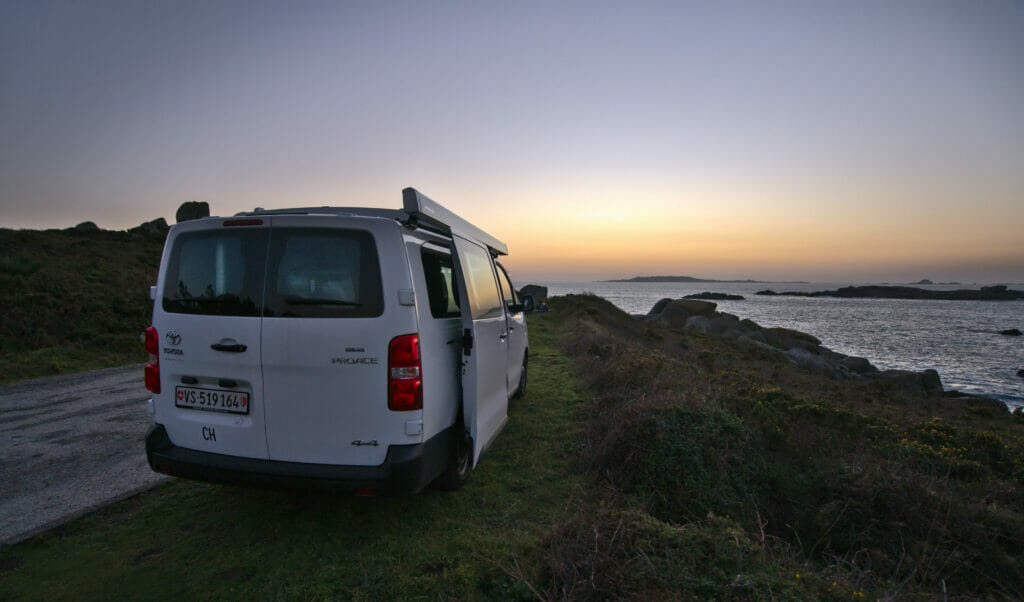
If you want to explore the coast, we recommend you rent a car, as you’ll be much more flexible in your travels. To find a rental car, we recommend the following website rentalcars to compare different rental companies. Rates in Santiago de Compostela start at around €15-20 per rental day, which is still very cheap!
Tip: it’s often much cheaper to rent a car from the airport than to pick it up in the city center. We’ll let you compare rates, but if you want to save a little, it’s a safe bet that the bus fare to the airport will be more than covered by the difference in price ;).
If you don’t want to rent a car and worry about the program, there are also organized tours that leave Santiago de Compostela just about every day for Galicia’s main attractions. Take a look at GetyourGuide to compare options and prices (count €45 to €60 for a day trip).
Where to eat? Our selection of restaurants
We’re obviously a long way from having tried every address in Santiago, but we’ll admit to having eaten extremely well during our stay. Overall, the quality of the food is really top-notch! Here are a few addresses that should help you enjoy your stay:
Breakfast and brunch:
- Muralla Cafetería : Not having taken the breakfast option at our hotel, this was the closest. They make great fresh juices and the pies and toast are very good!
- Mambara: we haven’t had breakfast there, but we’ve taken refuge there several times during heavy downpours. Their coffee is excellent and the staff very friendly (the dishes we saw looked okay).
- Clem Cafe: A vegetarian restaurant that serves great brunches and breakfasts (you can also go there for lunch, but it’s closed in the evening).
- Tertulia: A great place for brunch!
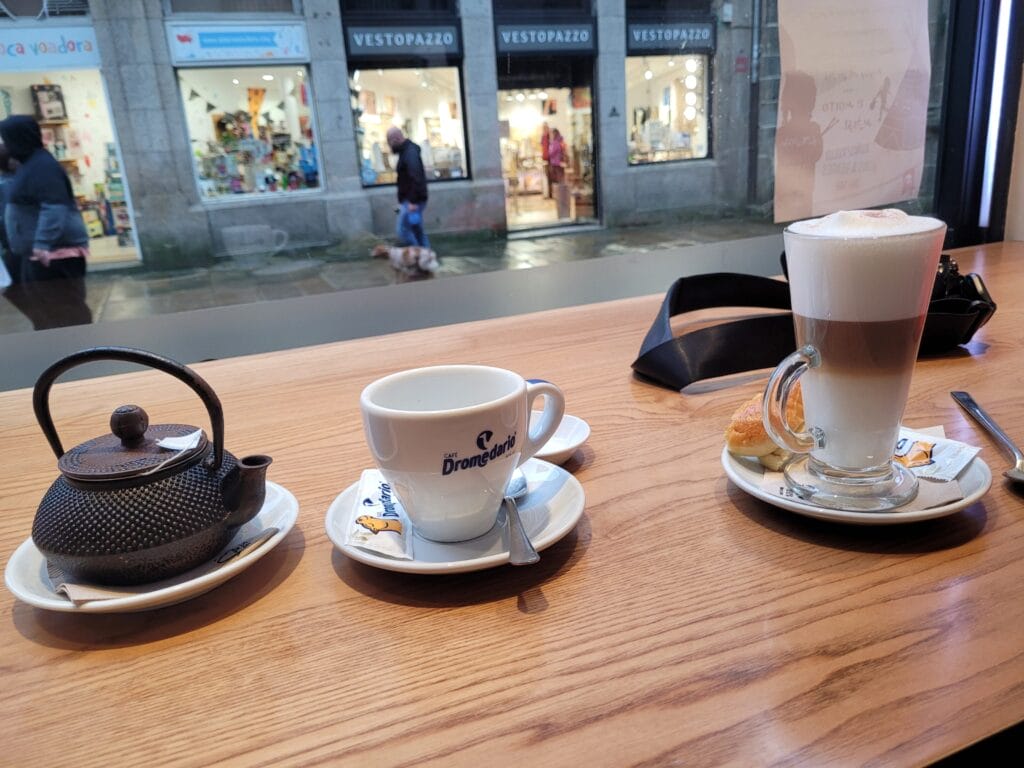
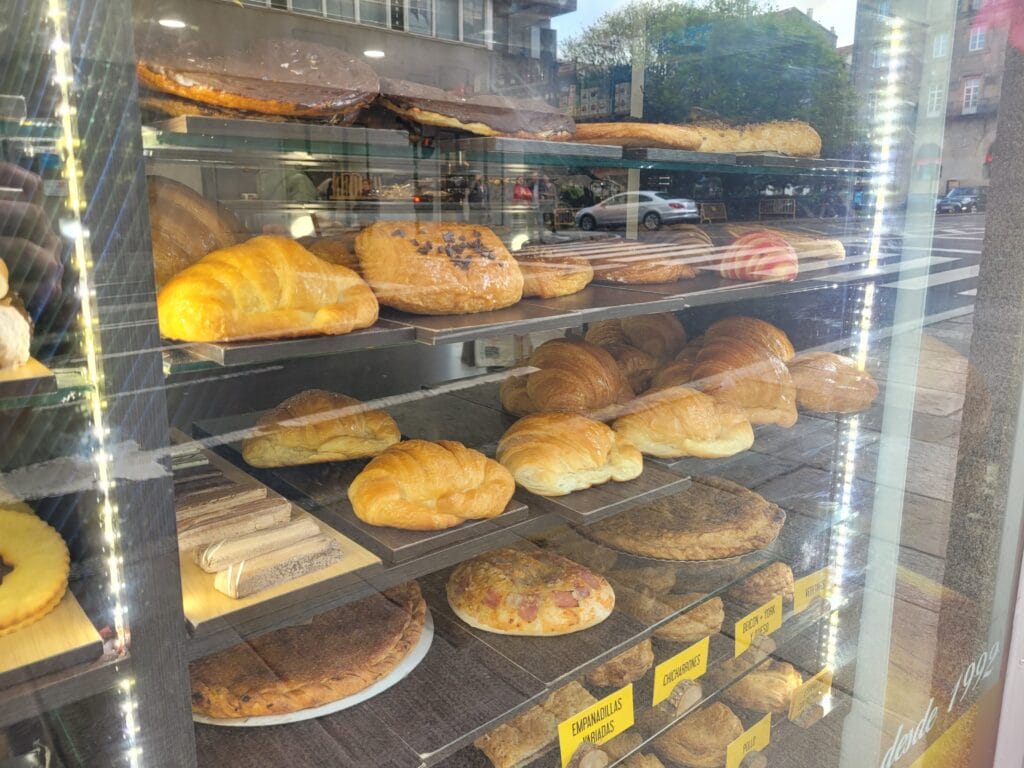
For lunch:
- Café Bar “El Muelle”: Located just around the corner from where we had the hotel, we stopped there for a bite to eat on the way in. So, while it’s not an “exceptional” address, it’s still a solid option for eating something good for cheap. The service was really nice.
- Bar La Tita : rumors have it that this is the best tortilla in Santiago… we’ll be honest, we haven’t tried 25 places to compare, but this one is definitely very good! 🙂 There are travelers, pilgrims and locals alike, which is a good sign.
For the evening:
- Casa dos Xatobes: We absolutely LOVED this place! Here you’ll find carefully prepared Galician cuisine with a touch of Asian fusion… yes, yes, it sounds strange, but believe me, it was really top-notch!
- Cerveceria: A Taberna do Bispo: A very nice address in the main street of restaurants (you’ll see on this street there’s plenty to choose from). We ate there for lunch just before leaving town and it was a great place to fill up on Galician tapas before heading back to Switzerland! 🙂
- A Noiesa Casa de Comidas: Galician specialties to eat for yourself or share with friends. It’s really good value for money and the atmosphere is very friendly. But be warned: this is a very popular address, so it’s best to arrive early (by Spanish standards 😉 ).
- Taberna O Gato Negro: a final recommendation for the road from our Galician friends. A place where the food is typical, inexpensive and hearty.
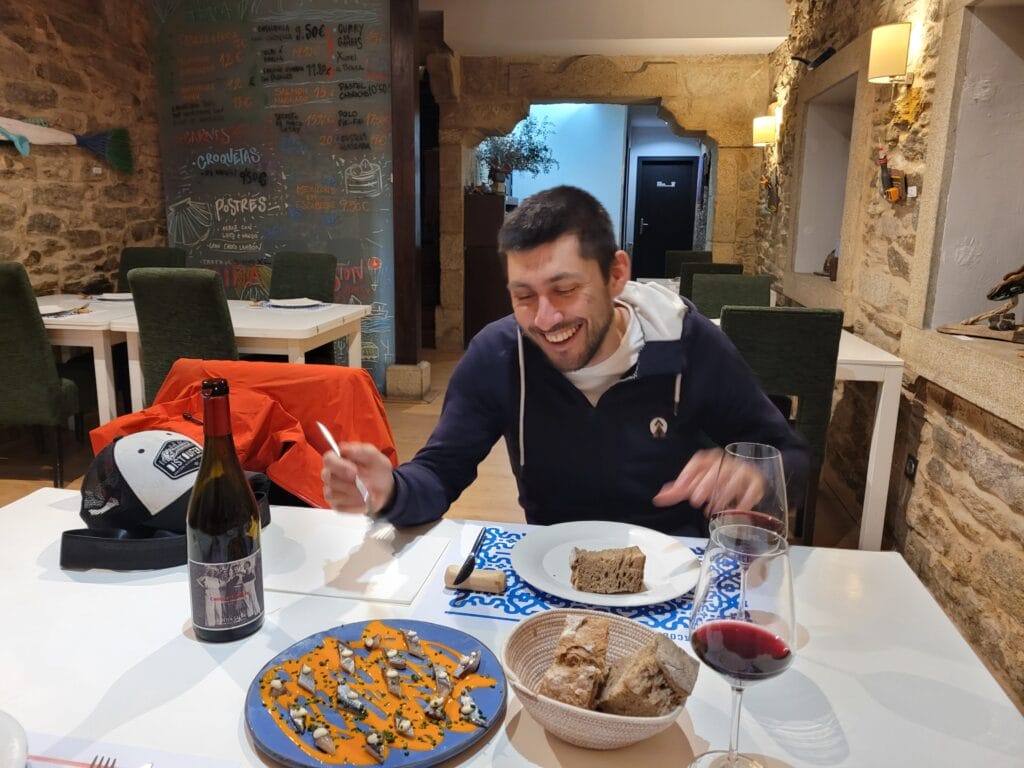
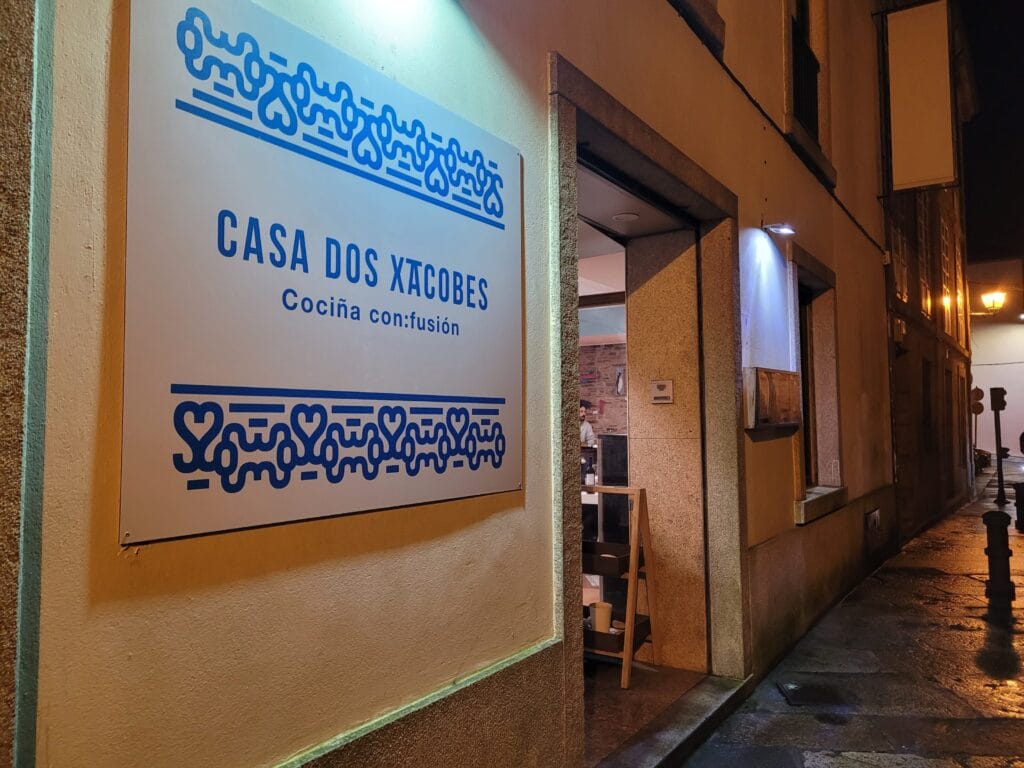
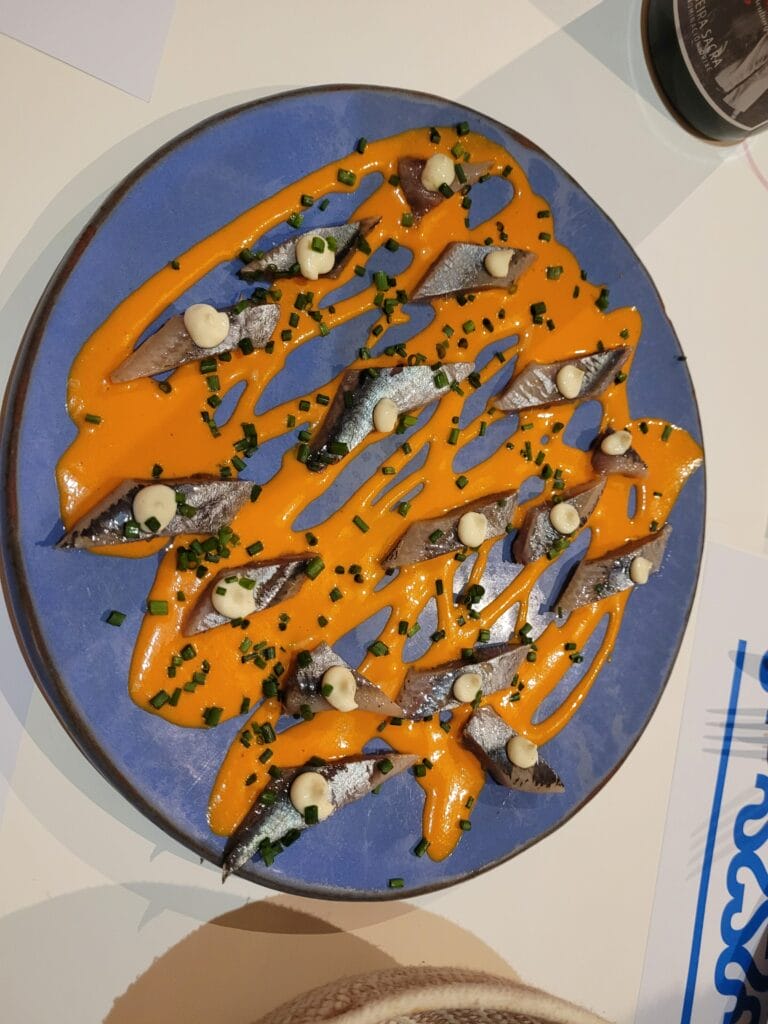
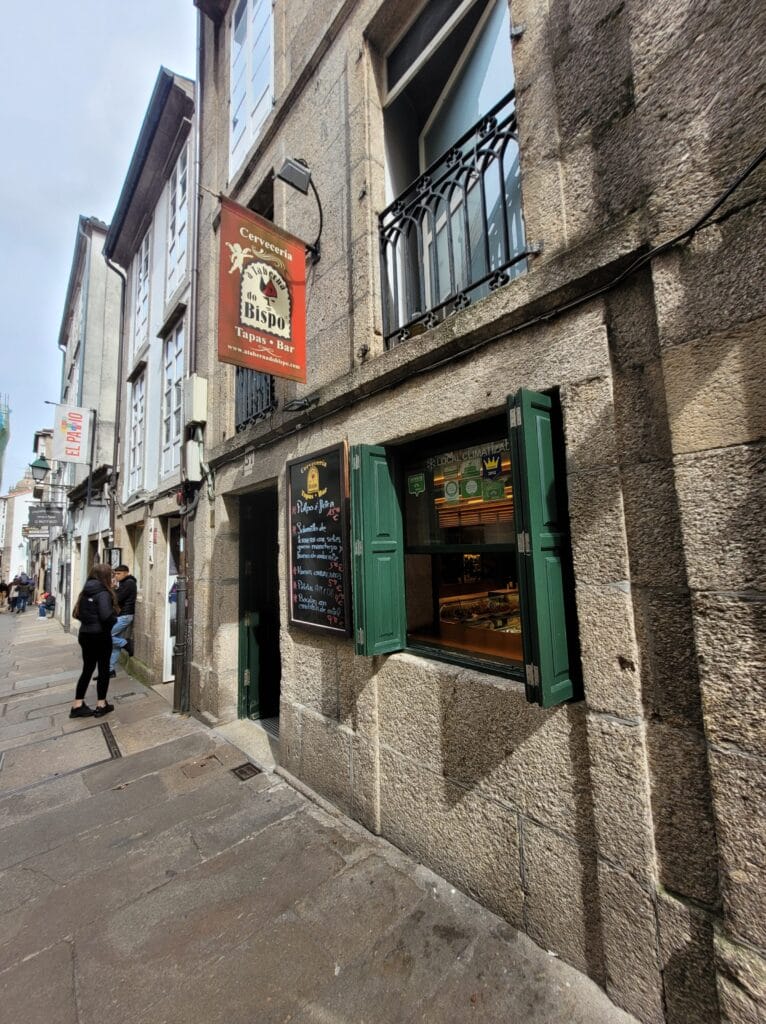
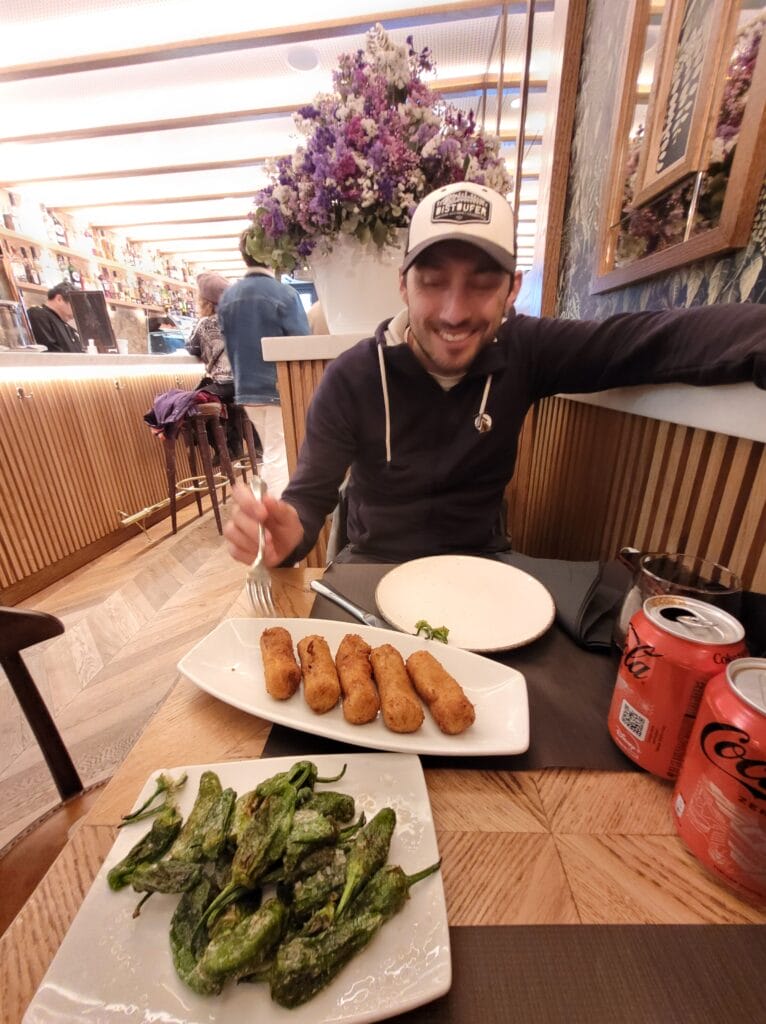
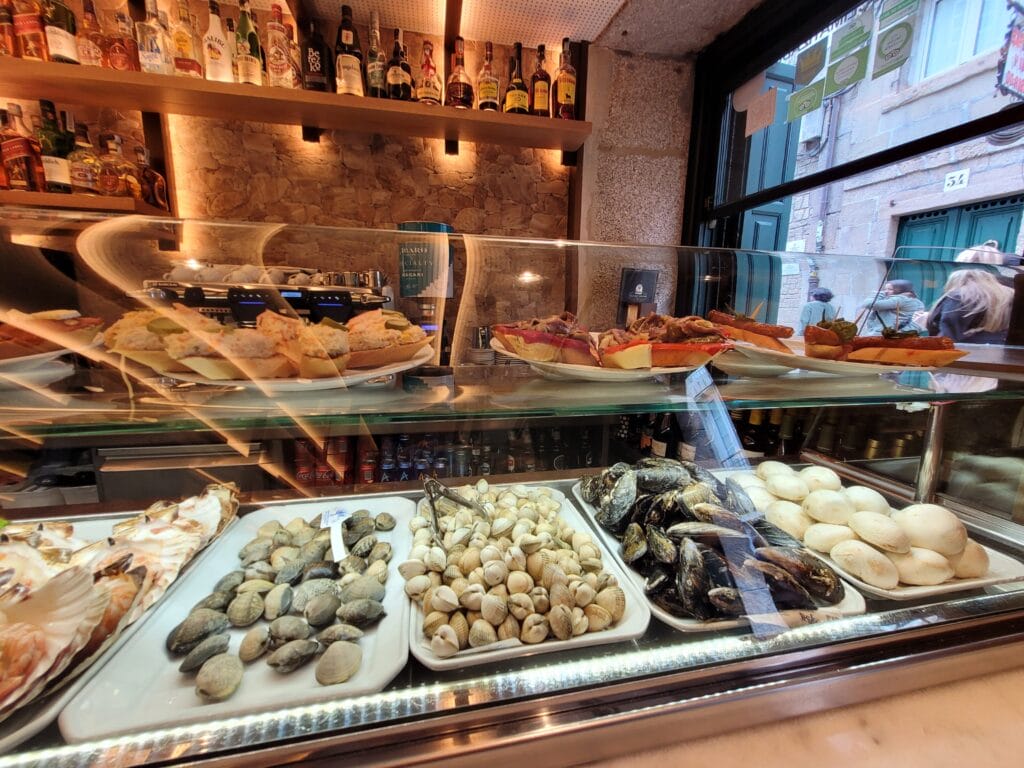
To have a drink:
- Pub Momo: a great address that doesn’t look like much from the outside… It looks like a mini-bar, but once inside you arrive in a huge space with a superb terrace.
- Pub Atlántico: The bar where you’ll find probably the best cocktails in town. All in a rock’n’roll atmosphere.
- Casa das crechas: a bar where you can enjoy live music, drinks and tapas. We haven’t had the chance to go there, but it’s a bar that came highly recommended by our Galician friends, so we can recommend it with our eyes closed. 🙂
Our map of Santiago de Compostela (all addresses)
To conclude this article, we leave you as usual with a small map on which you’ll find the location of all the places mentioned in the article. We hope you enjoy your discoveries, and don’t hesitate to leave us a comment if you have a good address or news update to share!
We wish you many wonderful discoveries in this superb city!
See you soon for some new blog posts
Note: this article contains affiliate links to partner sites such as Booking, Rentalcars and Getyourguide. By using our links to book, you obviously pay nothing extra, but we do earn a small commission, which helps us to create free, independent content.
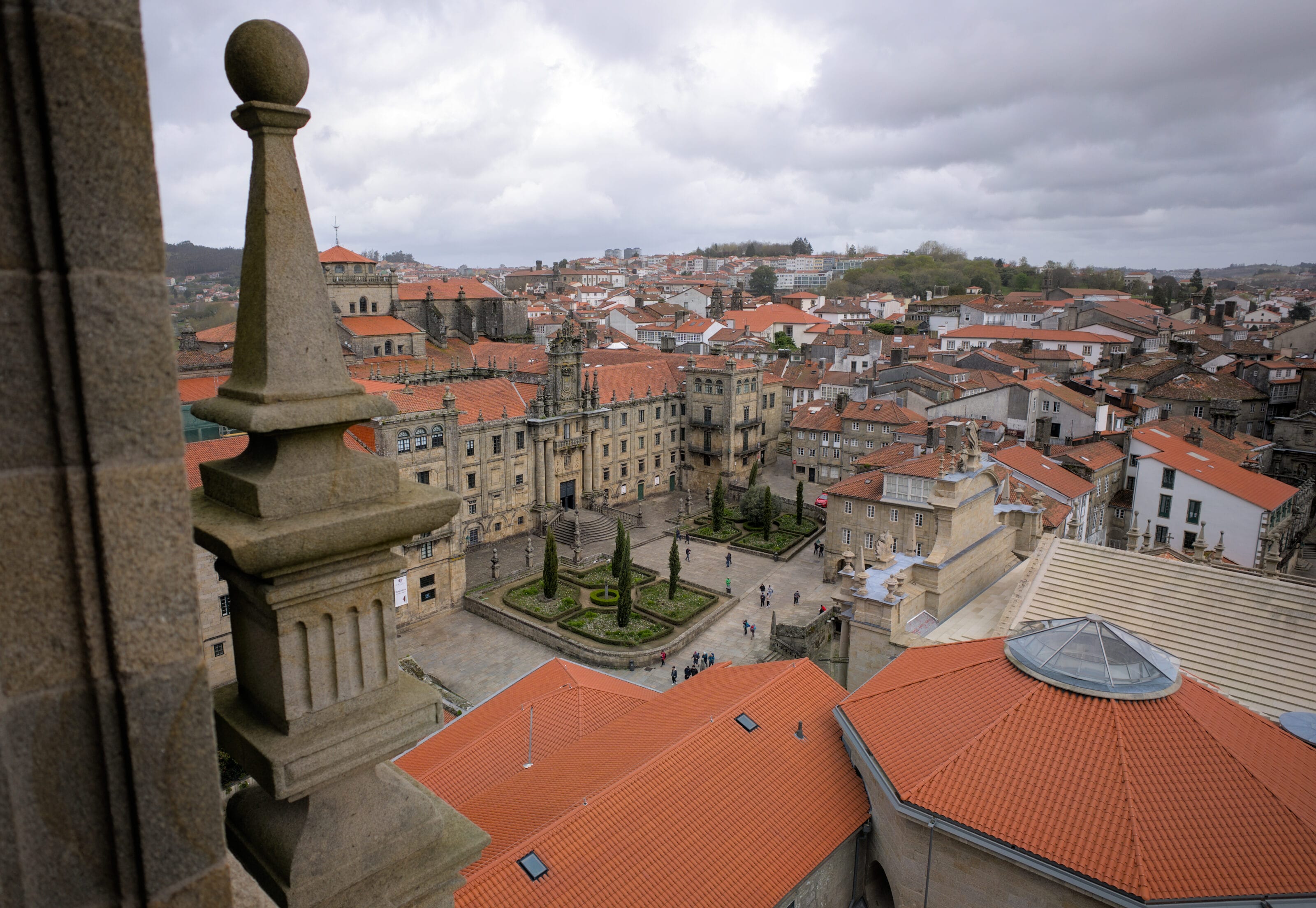
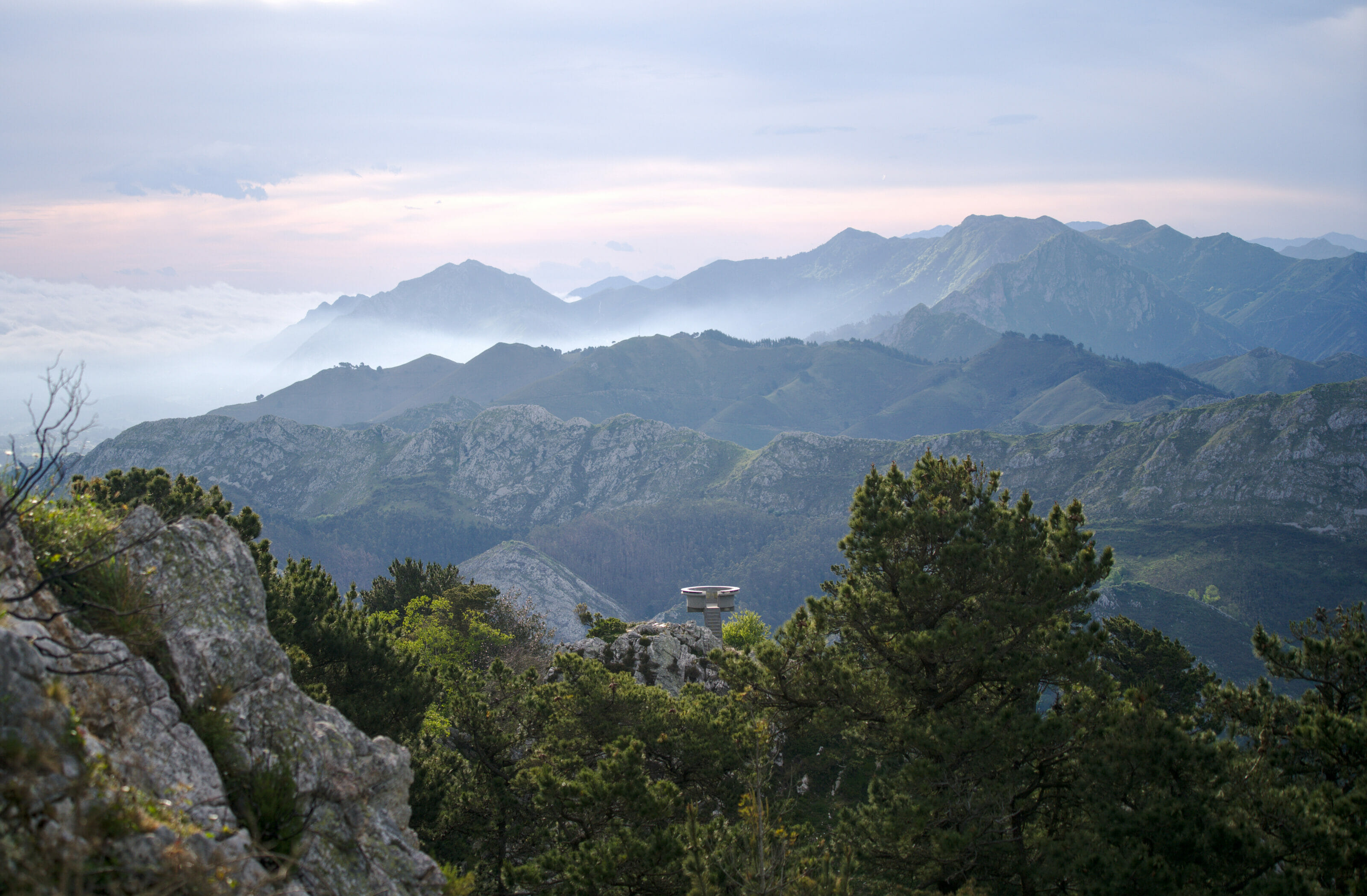
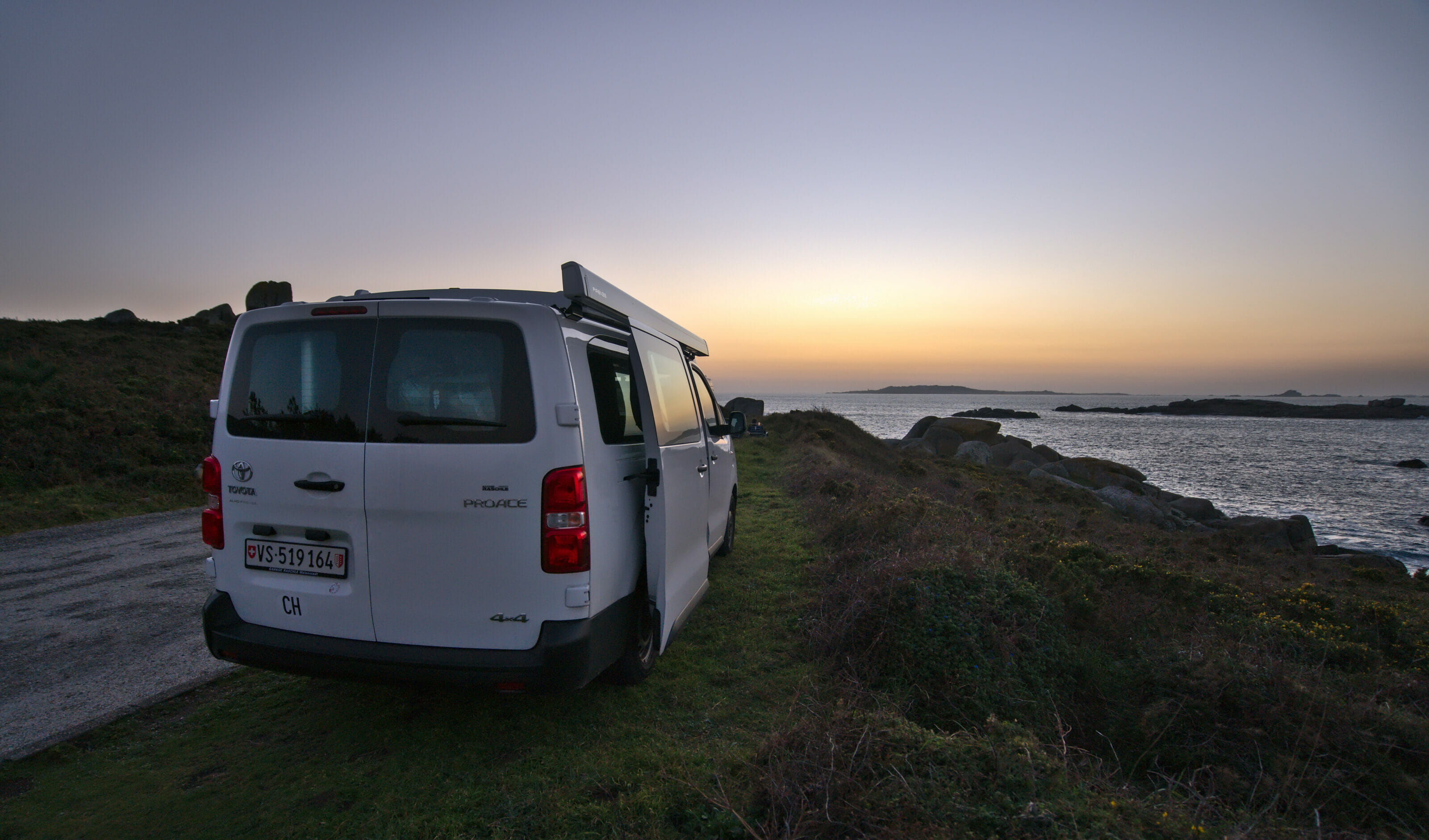
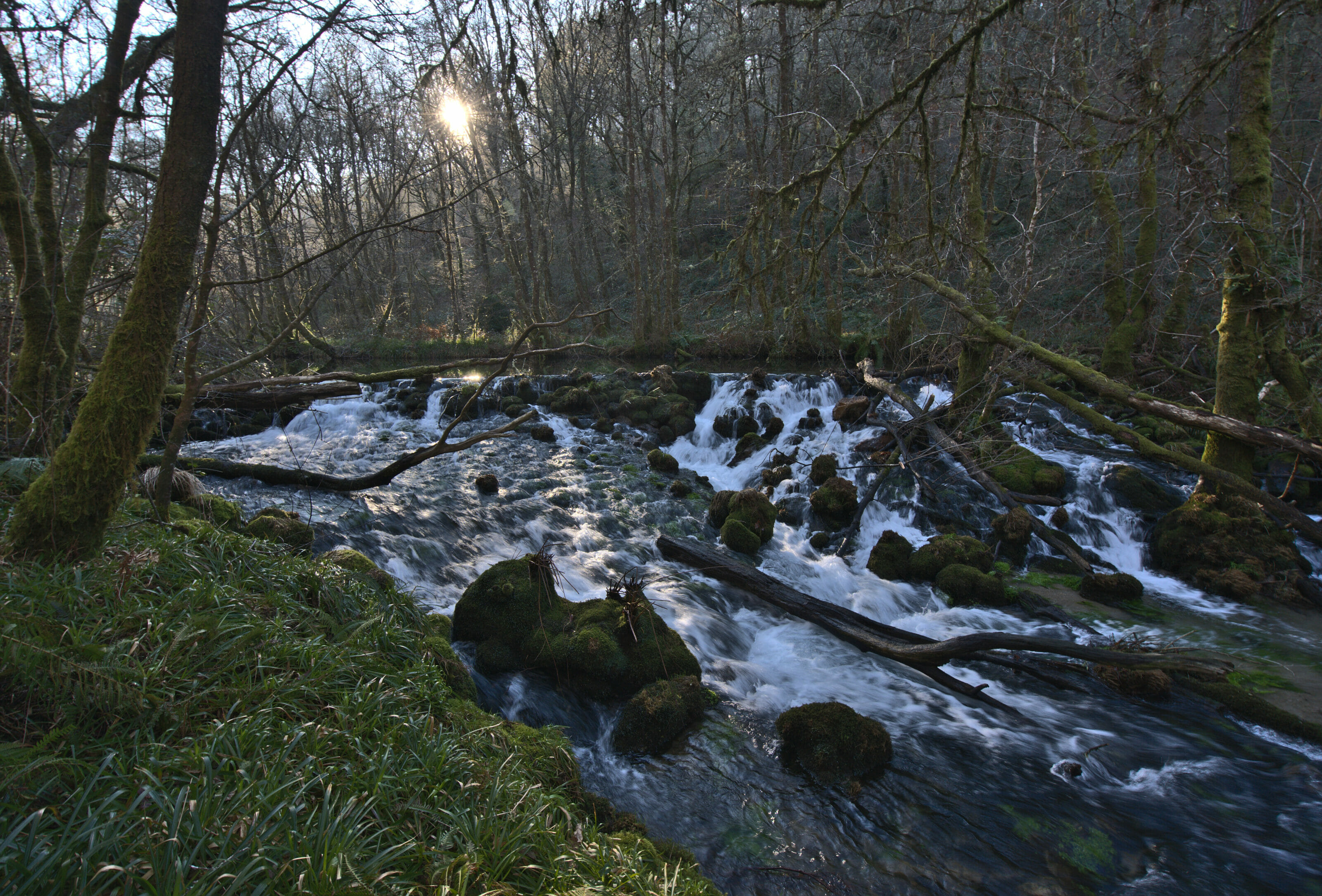
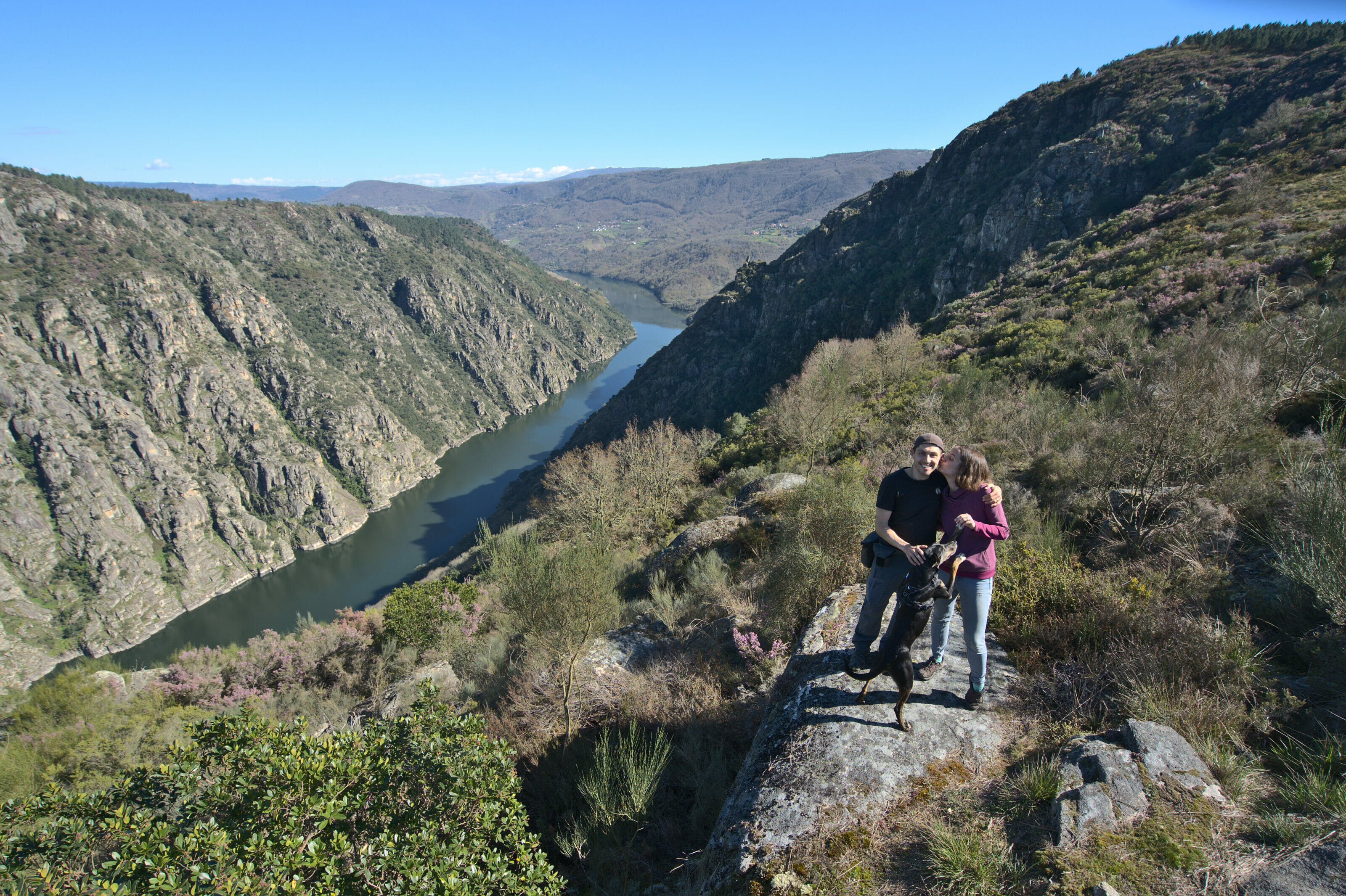
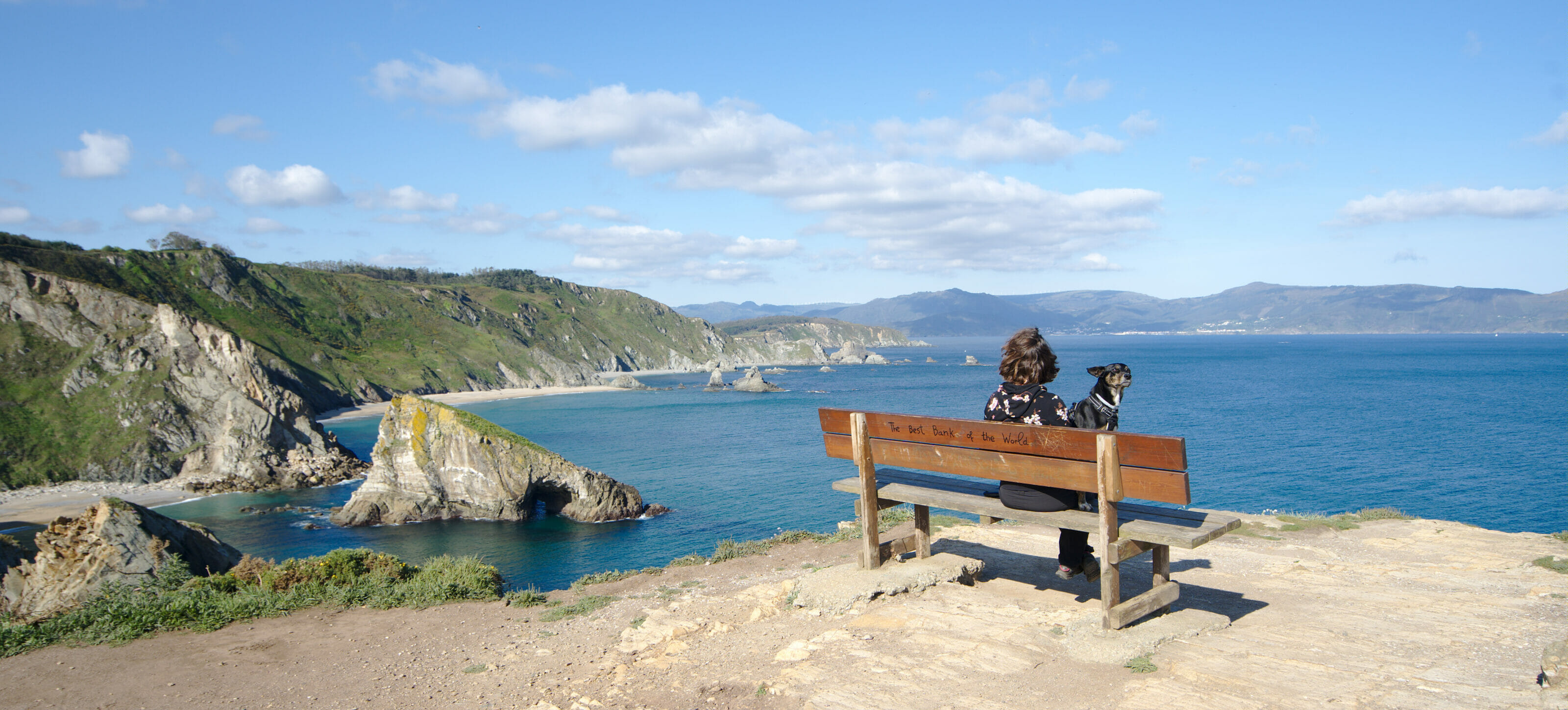
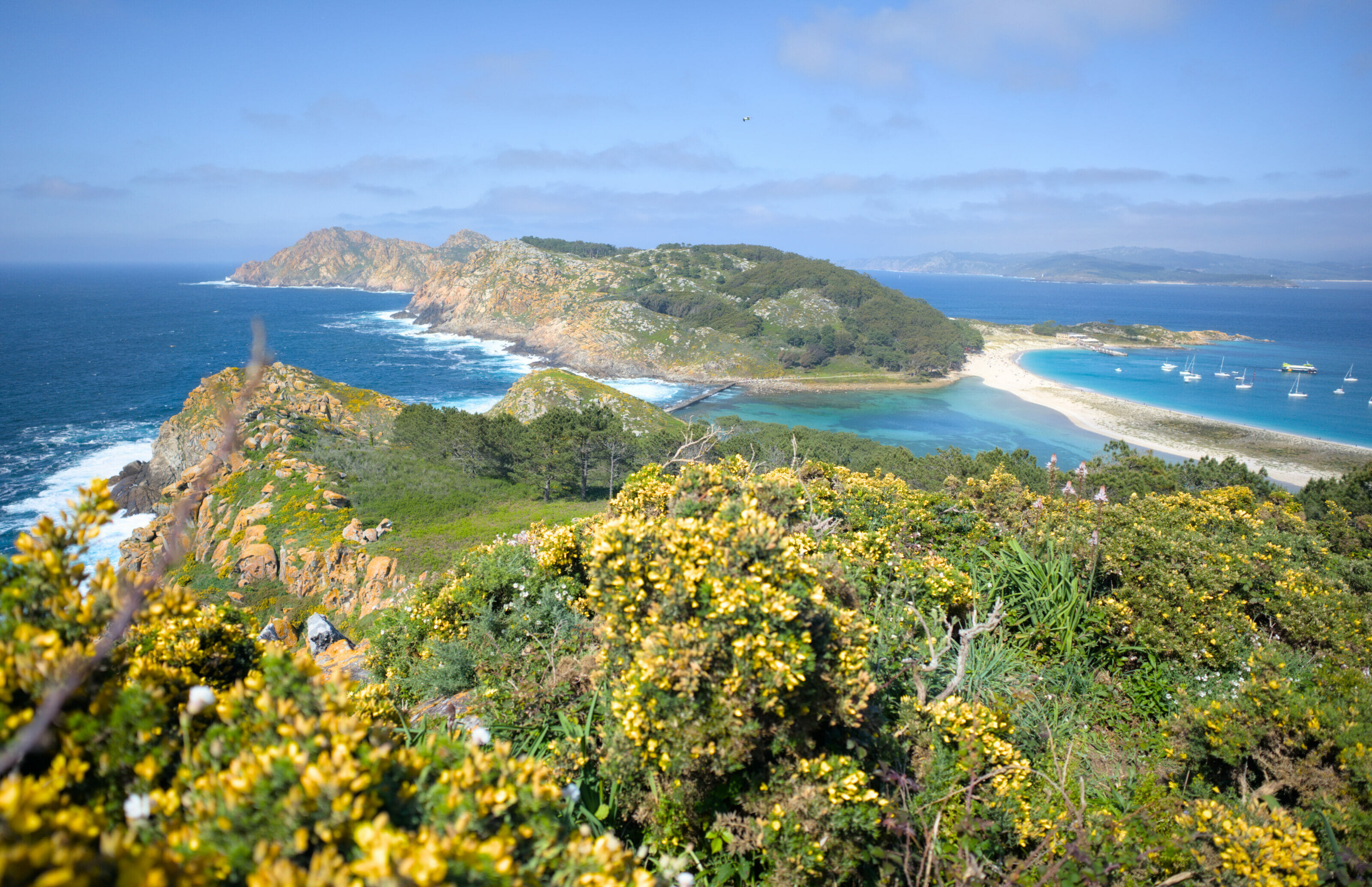
Join the discussion